Deconstructing the
CEC
sept 6th 2009
My newest baby,
my pride and joy.

A warm round of
applause please - for the CEC TL1X
I was
vacationing in wonderful, hot, wild, crazy, spicy and supercool New
York City and I planned in advance to bring something for my system.
US market is
incredibly rich in high end goods, but the shipping charges plus the
box
throwing couriers and reluctant owners refusing to ship - make a
personal visit necessary. Plus as a bonus you get a chance to buy a
Samsonite suitcase for 120 bucks to carry your extra payload -
try this in Europe.
So prior to the trip (family vacations) after a couple of days of
browsing the ebay.com USA I decided for the CEC.
This is my
absolute transport dream from 15 years ago. I drooled over the
Stereophile
review, so I HAD TO HAVE IT.
Not only my CEC
was priced ok, not only it was in Manhattan, not only it was the top
variant - champaigne gold and 1X, but it was also ABSOLUTELY MINT.
A nice trip to
totally changed Harlem, clean, safe and friendly, and one hour later I
found myself
carrying 40 pounds of drop dead gorgeous aluminium toy. Thanks to Tim
for good business.
The owner - did
not fully understand what he owned - but to understand why - read
on. (I mean he took the CEC to be what they said in Stereophile)
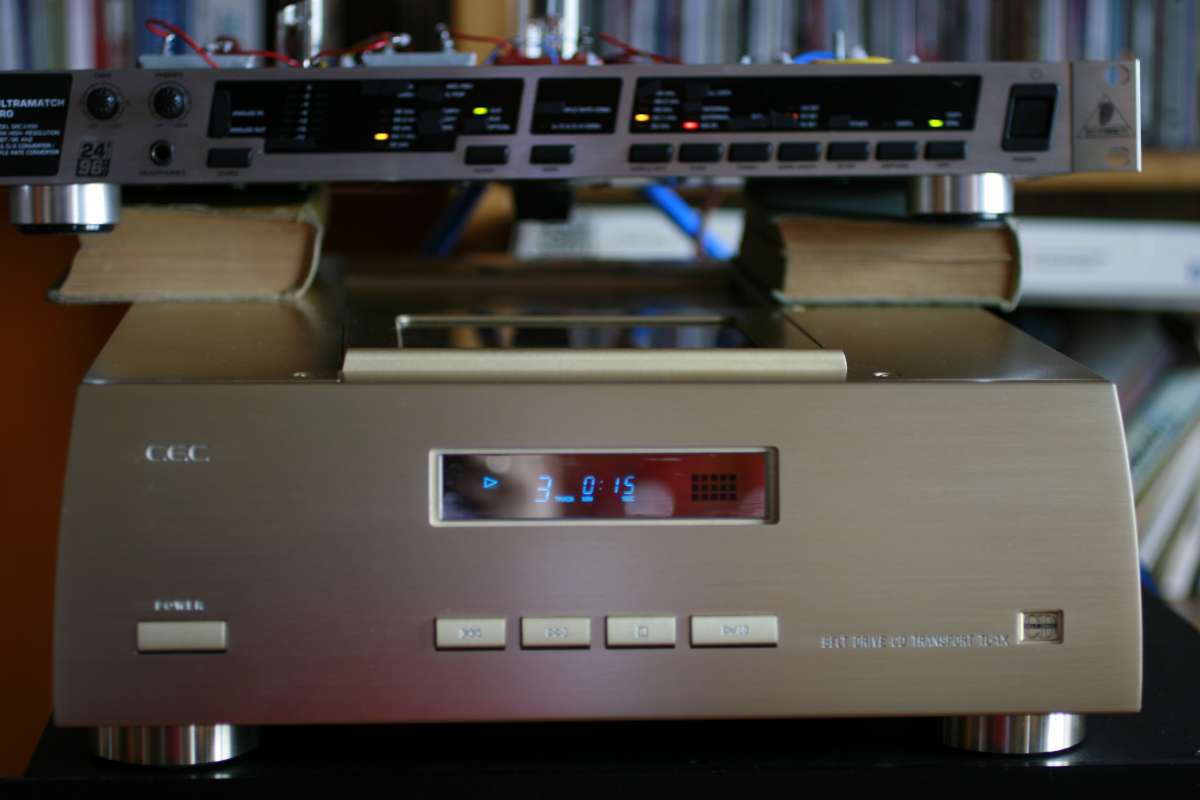
Whoooa. What a
gadget. Remember the legend? It goes like this: "CEC made the world's
first belt driven transport, where similarly to vinyl turntables - the
CD turntable is driven by a remote motor via a rubber belt. Thanks to
the belt - it sounds like analog, smooth, easy on the ear, liquid and
definitely - High End."
The CEC in reality belongs to Sanyo, as revealed a label under the CEC
label, so it is a Sanyo kind of a Lexus. Or Lexus kind of a Sanyo.
Here is the
Stereophile link to a review which made CEC a commercial
success. A blessing from Mr. Harley - was enough to jump--start the
newcomer company.
Belt or not -
C.E.C. TL-1X looks pretty, with its quarter inch alu panels, curved
shapes, high mass, sliding doors, gigantic puck and spartan
buttonology. Could a CD look any better than this - NO!
It is like with
pretty girls - pretty as they may be, we have a temptation to peep
under the skirt, don't we ? So lets do it. Nothing inappropriate with
this babe.
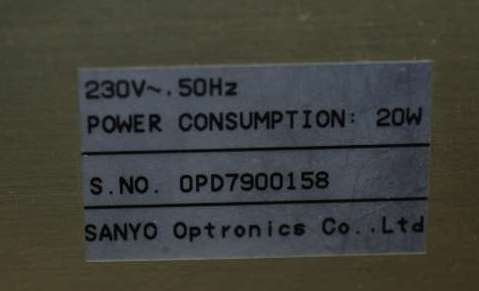
Below is a
beautiful , belt driven CD section.
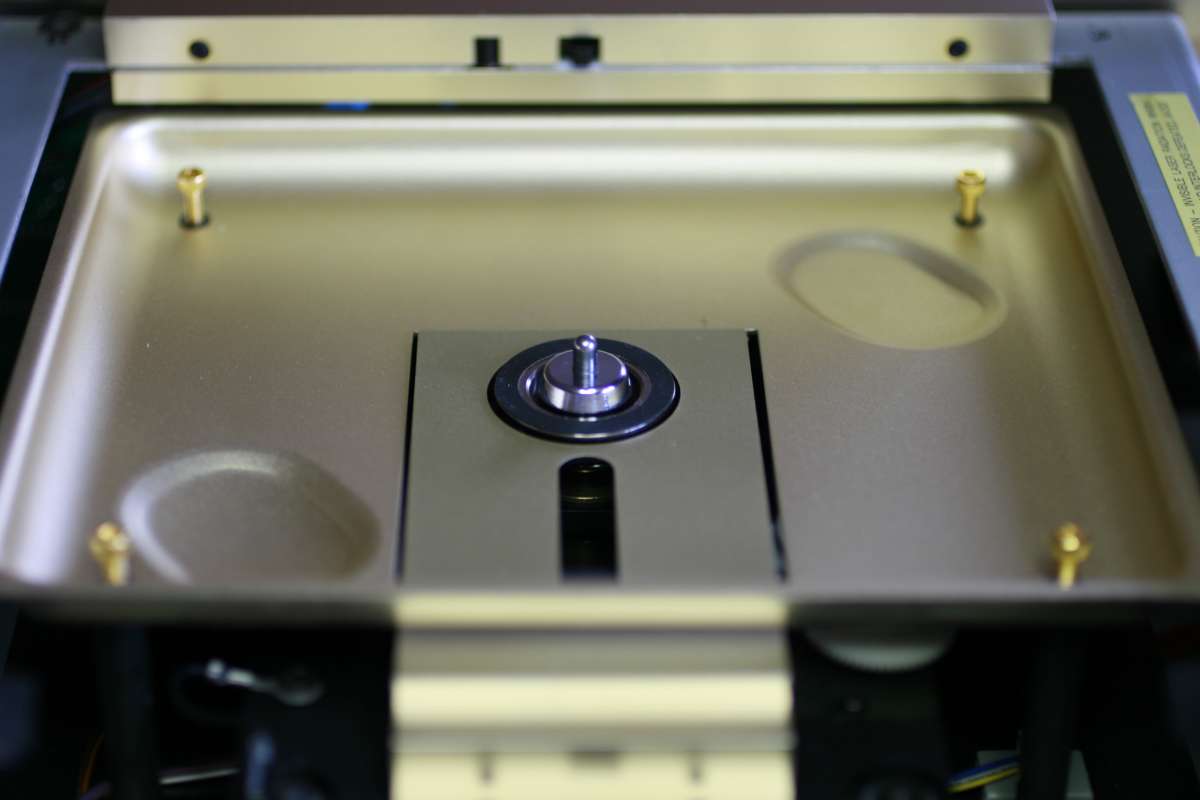
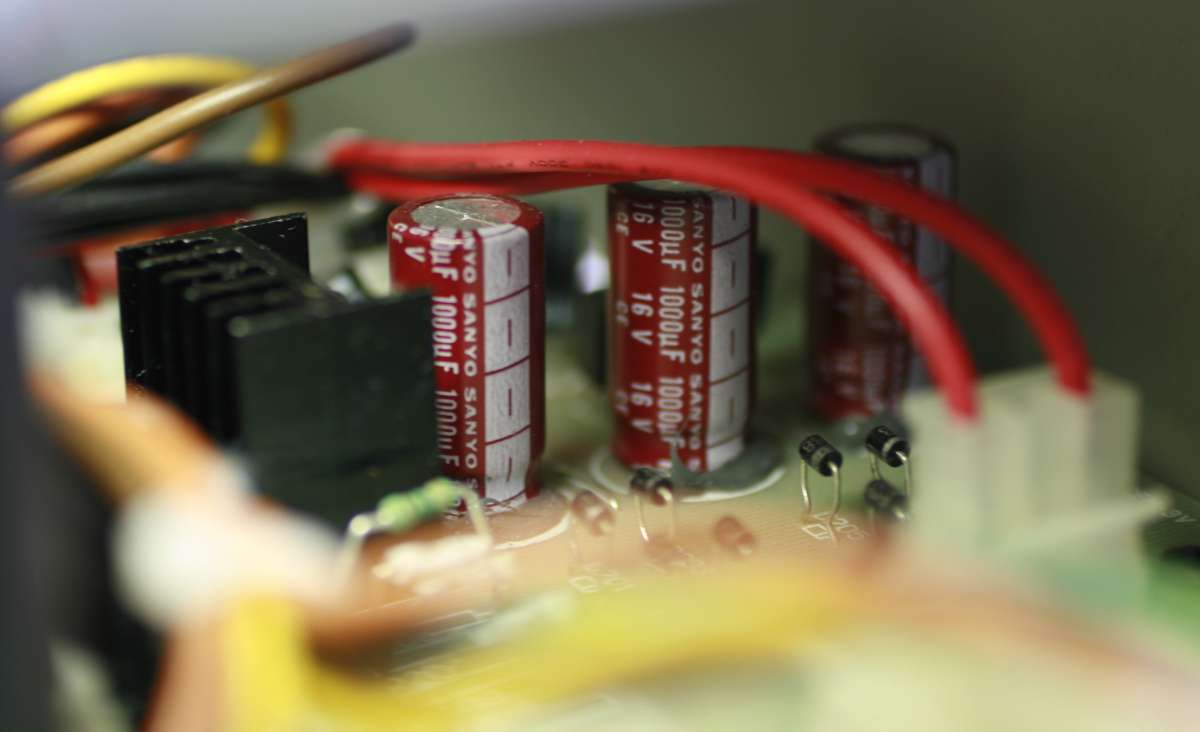
Above - the
capacitors are from SANYO, but no oscons here. Lets hope these are good
enough. Power supply is on separate PCB and it is a CEC job. Nice but
nothing to write home about. I was able to switch from 110 to 230 V in
one easy switch of a plug. Nice. Sadly - the power supply quality
is rather poor, there are 4 regulators: +5, +6, -6 and +24V.
The problem is that almost all electronics uses this one +6 V power so
it is almos as good as one supply for all player.
In addition to that - the electrolytes dont have any bypass and are not
from LOW ESR breed, so the noise rejection is poor.
There is no AC treatment at the input - no capacitor, no choke, no
varistor either.
There is no choke or coil after regulators - just one cheap electrolite
and thats all.
Man, I have seen better supplies. Even in players as cheap as Sony
CDP-227ESD. Cec spared five dollars worth of parts in their flagship
player.
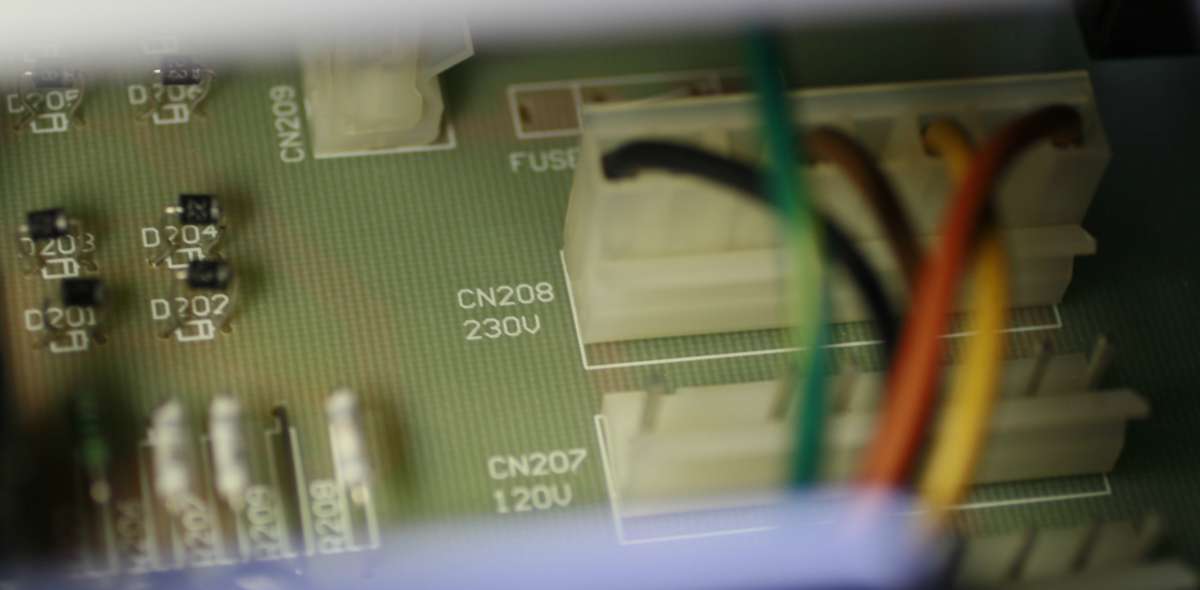
Above - the 120 - 230 v switch
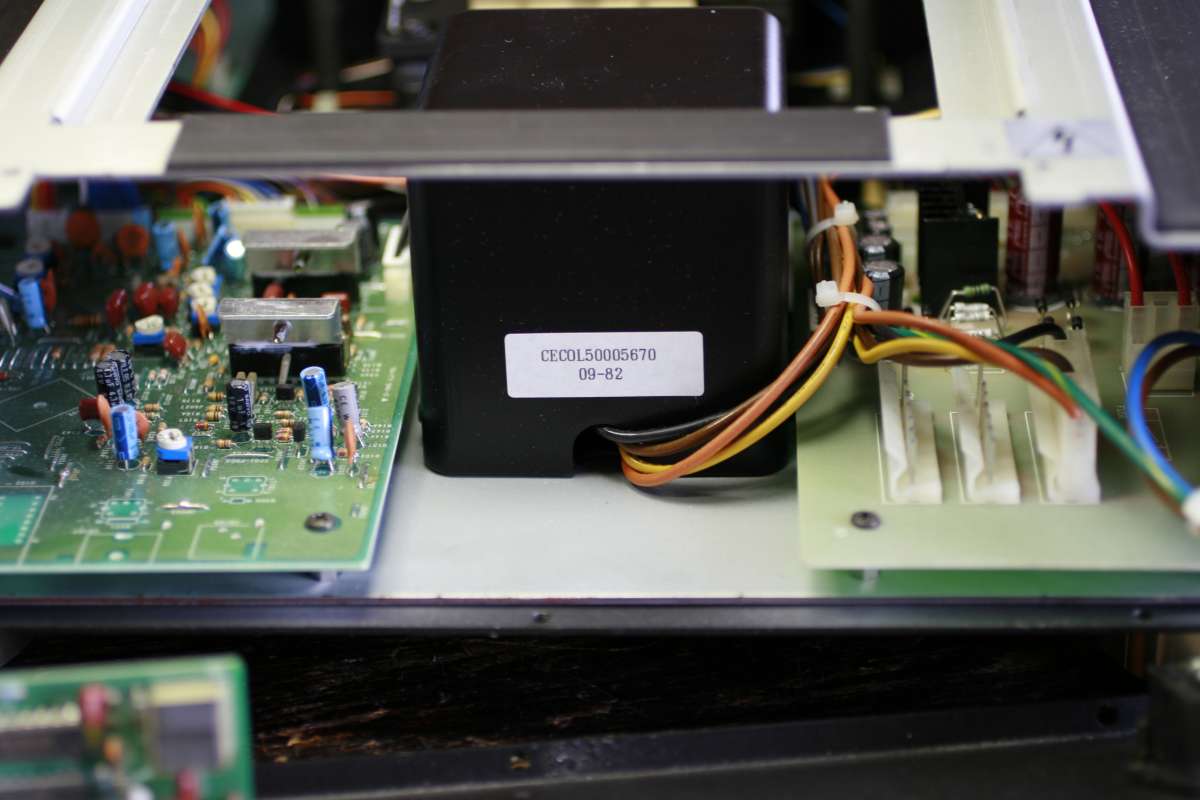
The transformer
sits in a black steel cube - I cant judge it. It looks solid but
looks can be deceiving. Like with the motor......
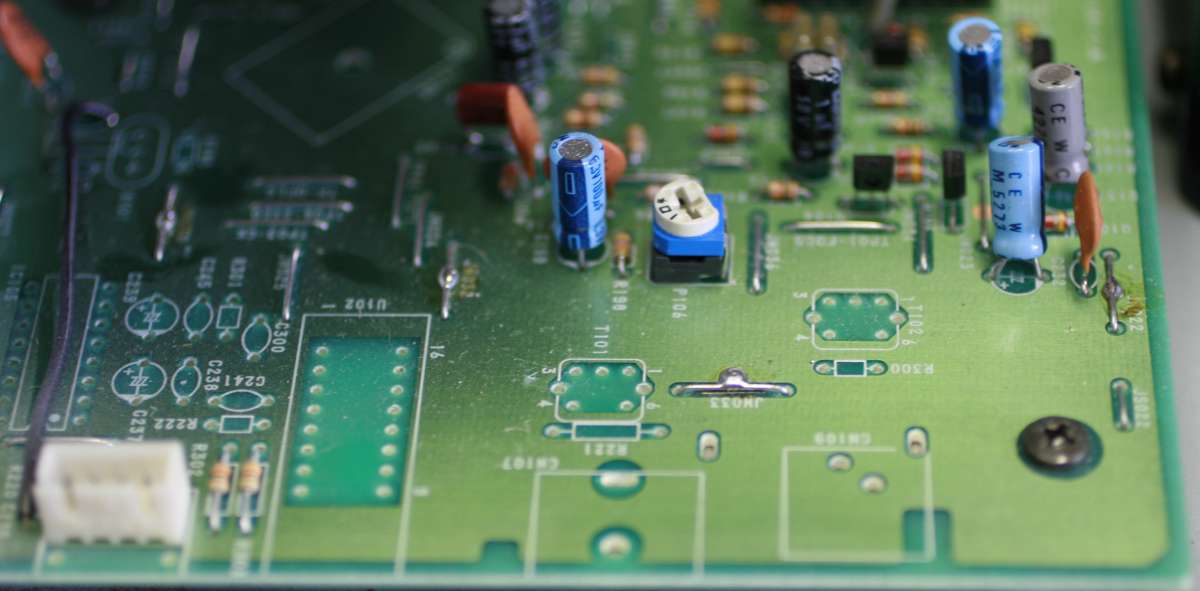
Above is the
main PCB - like all CEC - it is a Sanyo. Strangely - world top
transports are almost all Sanyo. Mephisto 2, Shigaraki Clone, Roksan
ROK-DP1 and CEC
chose Sanyo as vendor of laser and mechanism.
You notice some
parts missing - they were removed and placed on separate small PCB
attached to the back panel as OUTPUT SHAPING BOARD. Remember this one
for later.
This PCB is just
BEGGING for oscons (maintaining nicely the Sanyo pedigree.) The
PCB does not have CEC signature. It is a standard boombox PCB - cheap
and messy, it was for 100% taken from another sanyo cd player.
I have finally replaced all caps with Sanyo oscon SE series. It does
sound better - cleaner, smother, more magical.
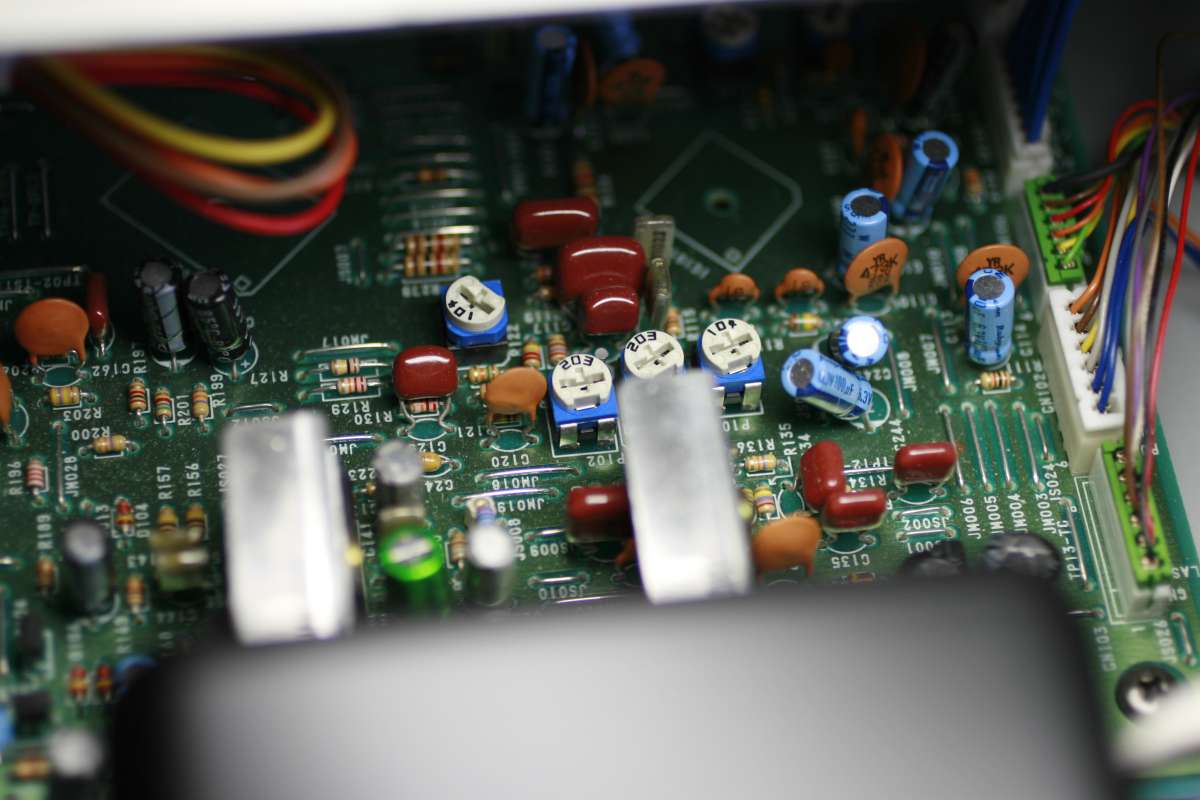
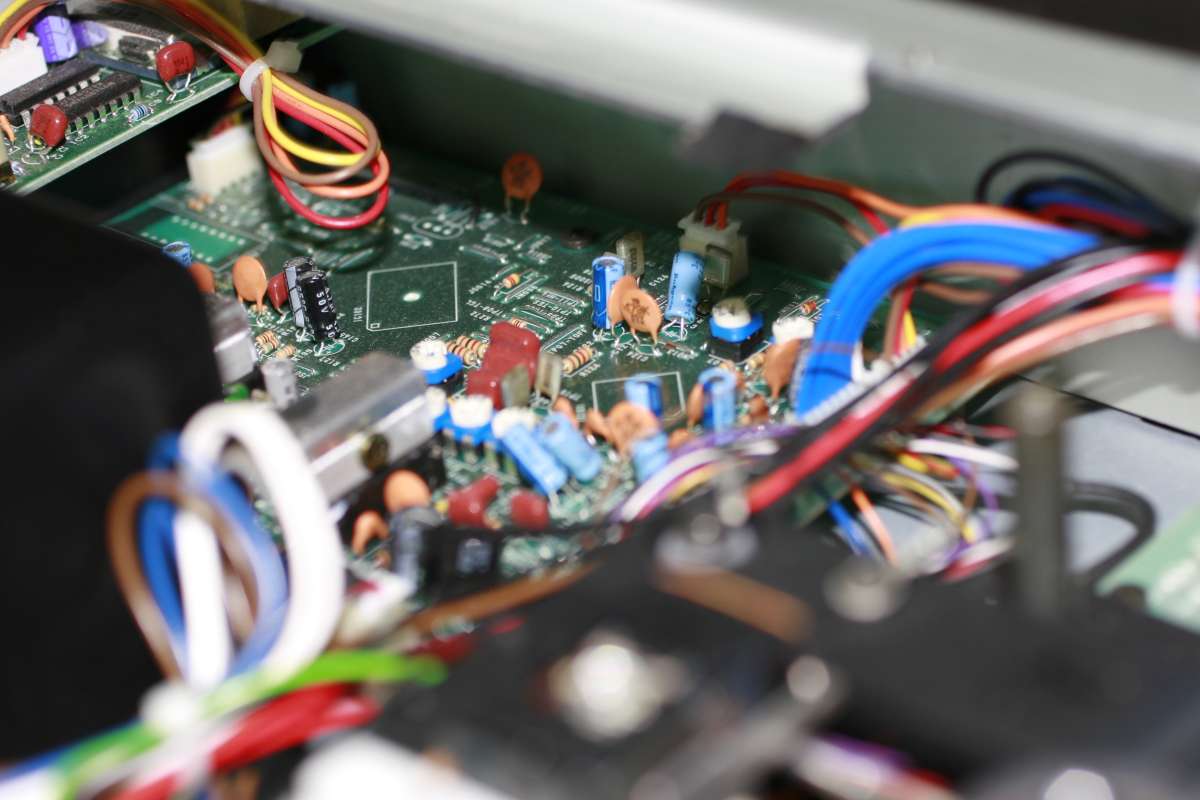
Below you see
two chips which perform output SPDIF signal shaping buffer.
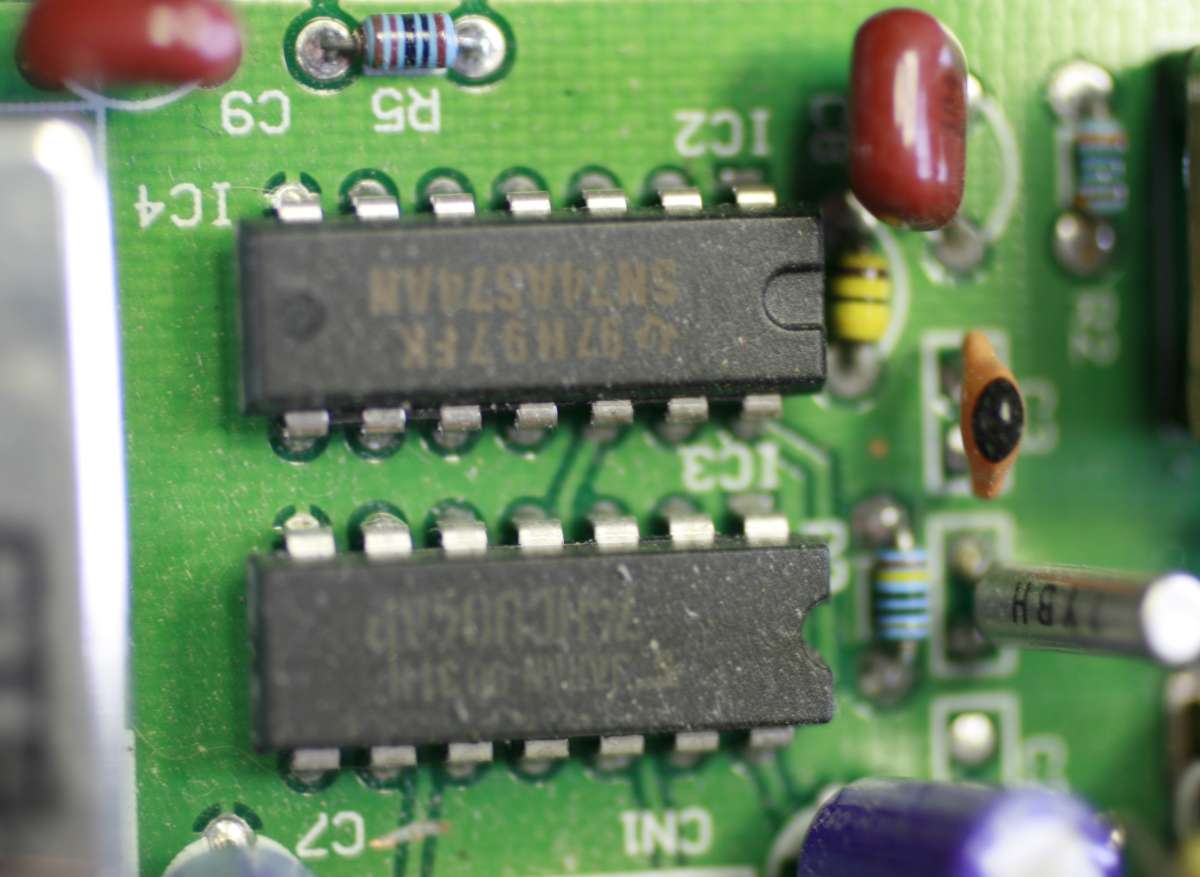
Below you see
the whole small output PCB for S/PDIF signal shaping buffer.
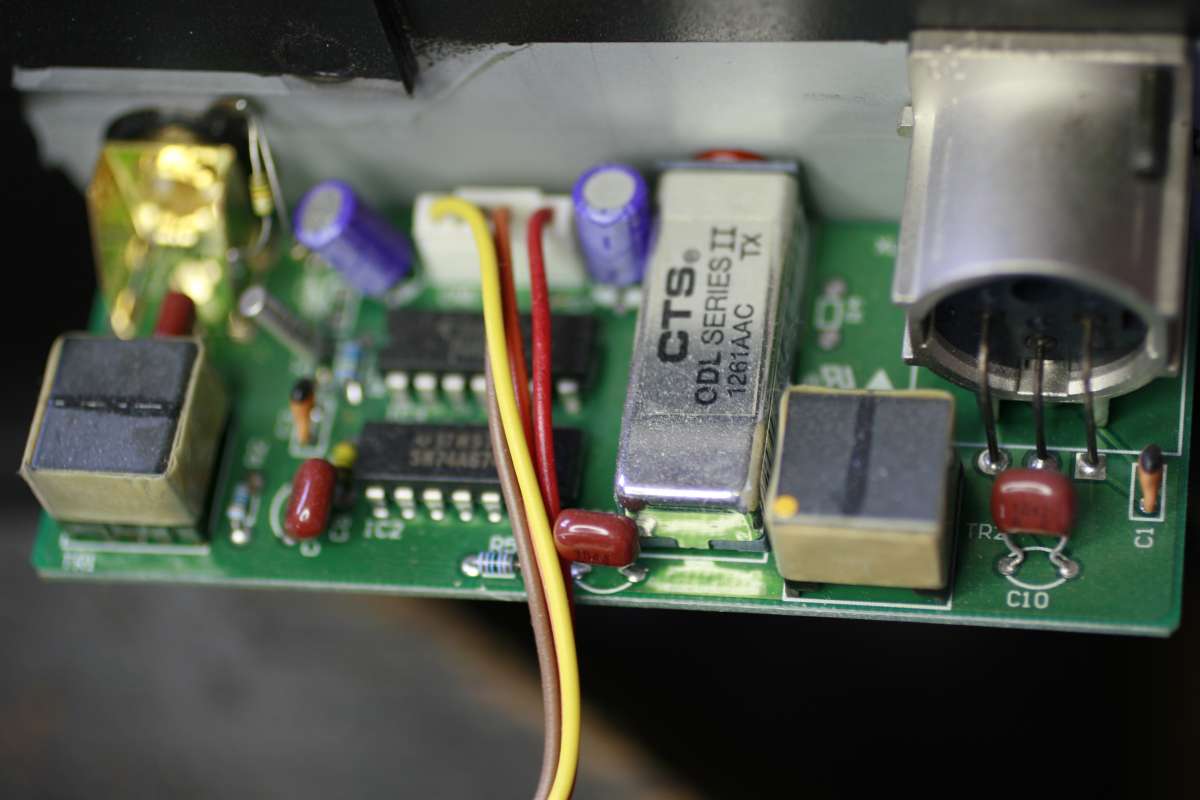
As you see above
- CEC has (from the left on the photo) coax RCA for spdif, Toslink high
end version of block (silverish box) , and AES/EBU symmetrical balanced
digital output too.
The two black
cubes are output transformers.
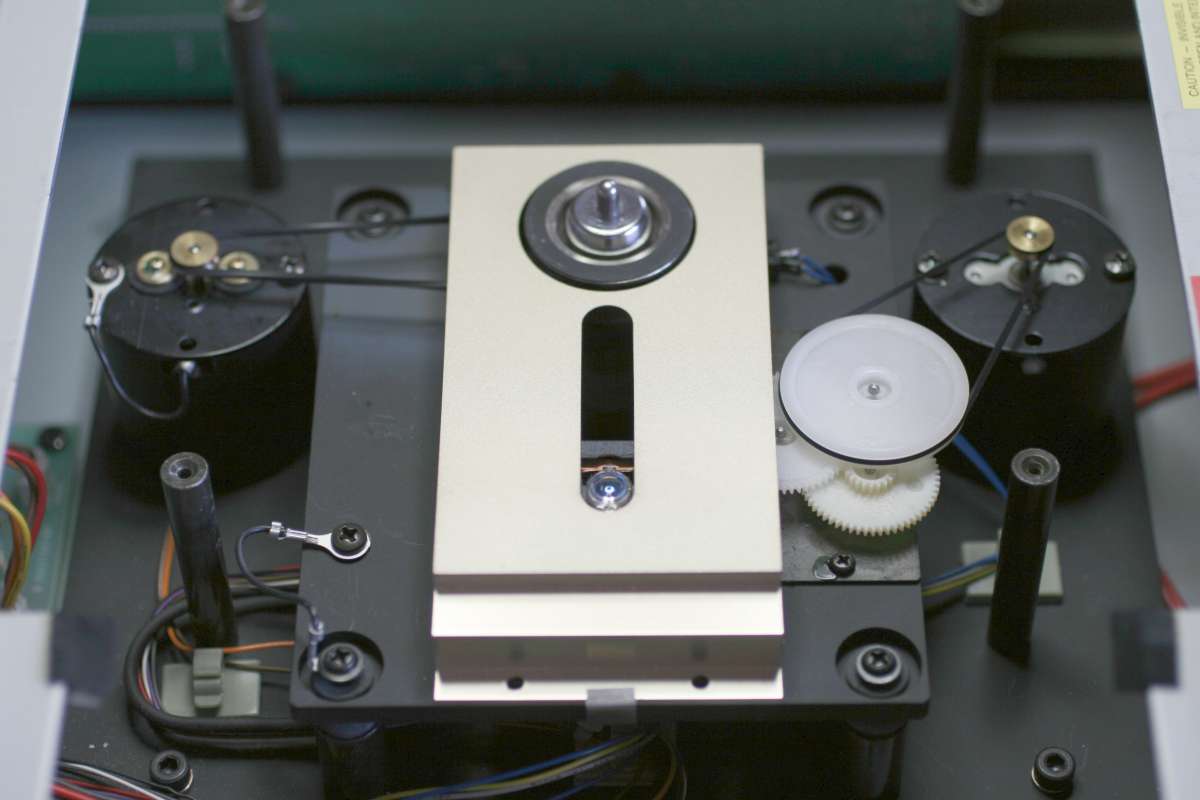
Above is the
famous belt transport in full glory.
Left black motor
is for spindle, right one is for tracking. So far - so good.
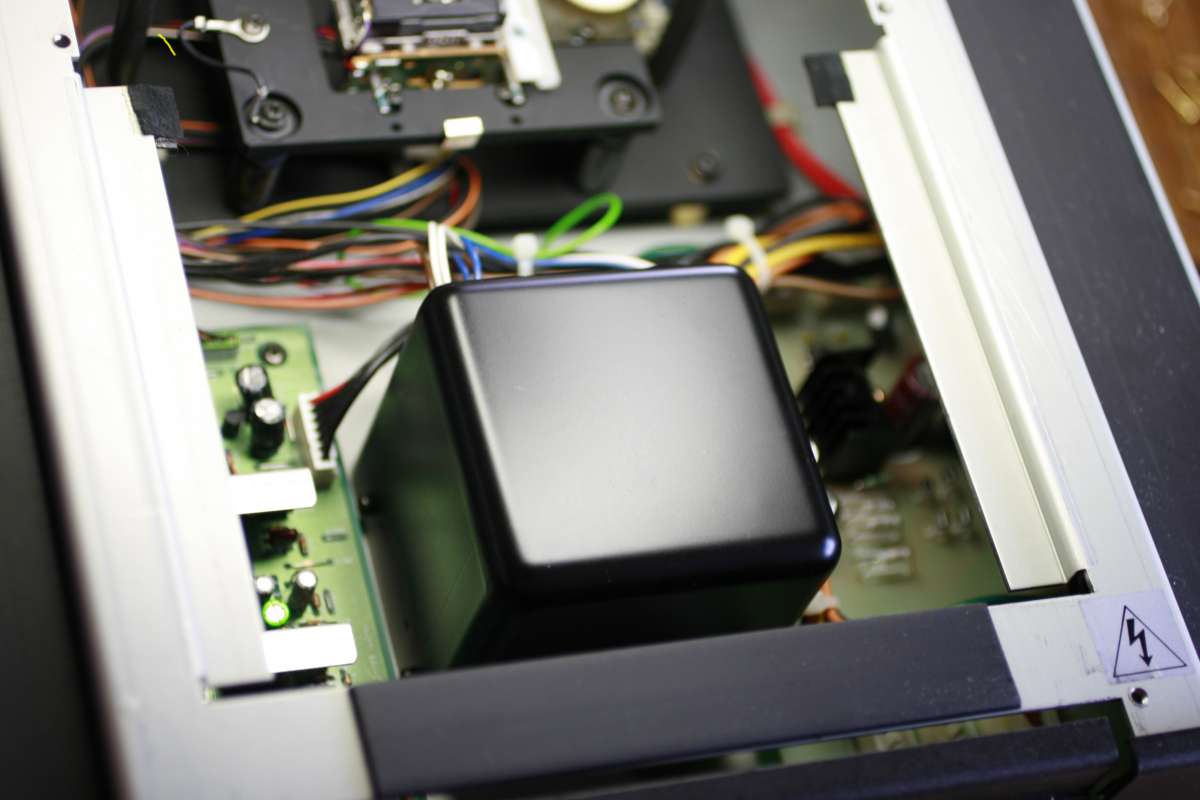
Above is ze
transformer.
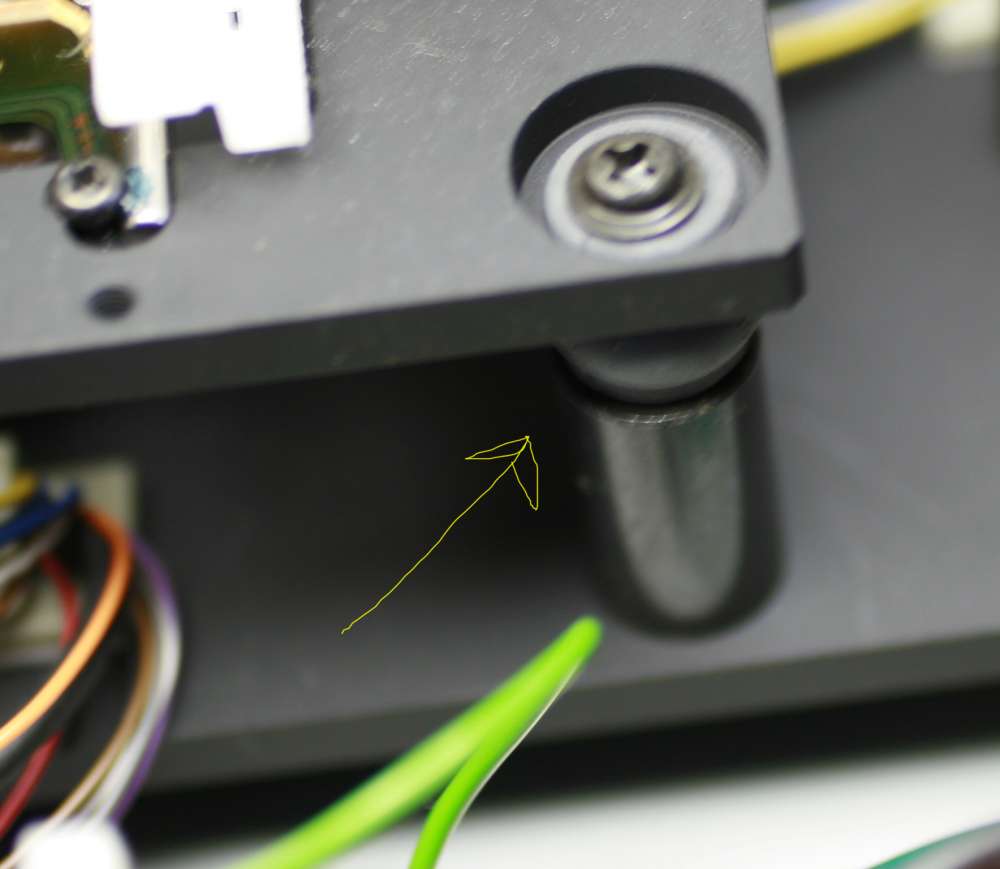
The arrow points
to the rubber cushions supporting the mechanism. Nice but not too
sophisticated, I mean boomboxes have similar thing too.
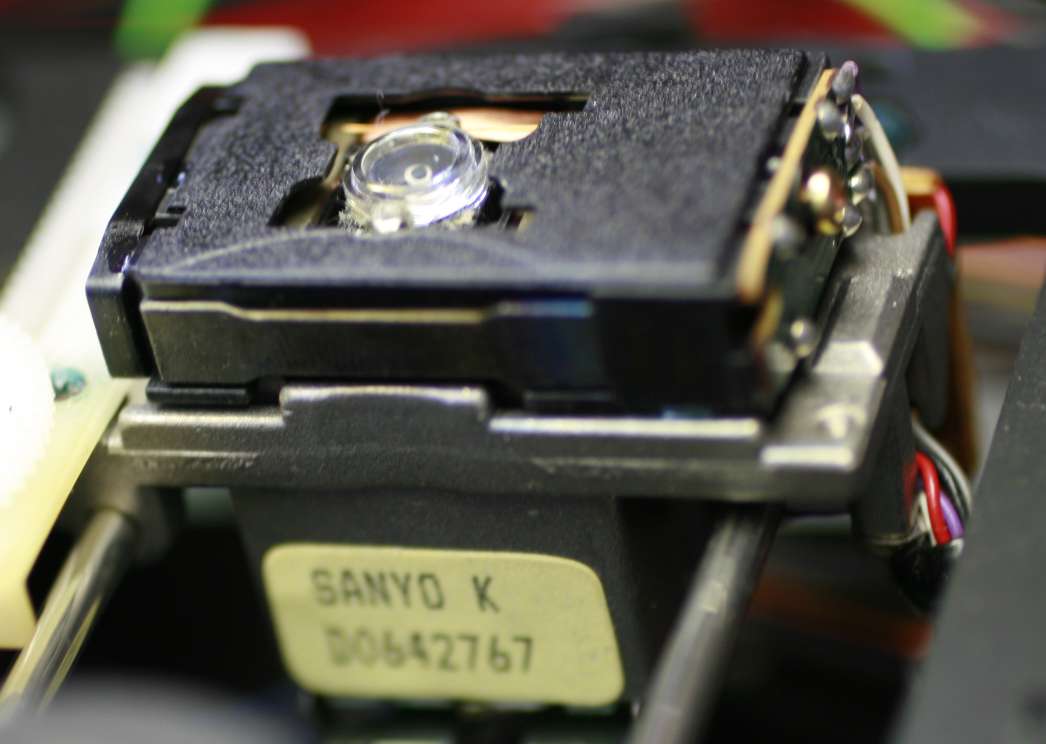
Sanyo laser
under magnifying glass looks really GREAT. It is so well made, that
even Sony may blush.
All laser is
built onto a cast alloy sub-assembly.
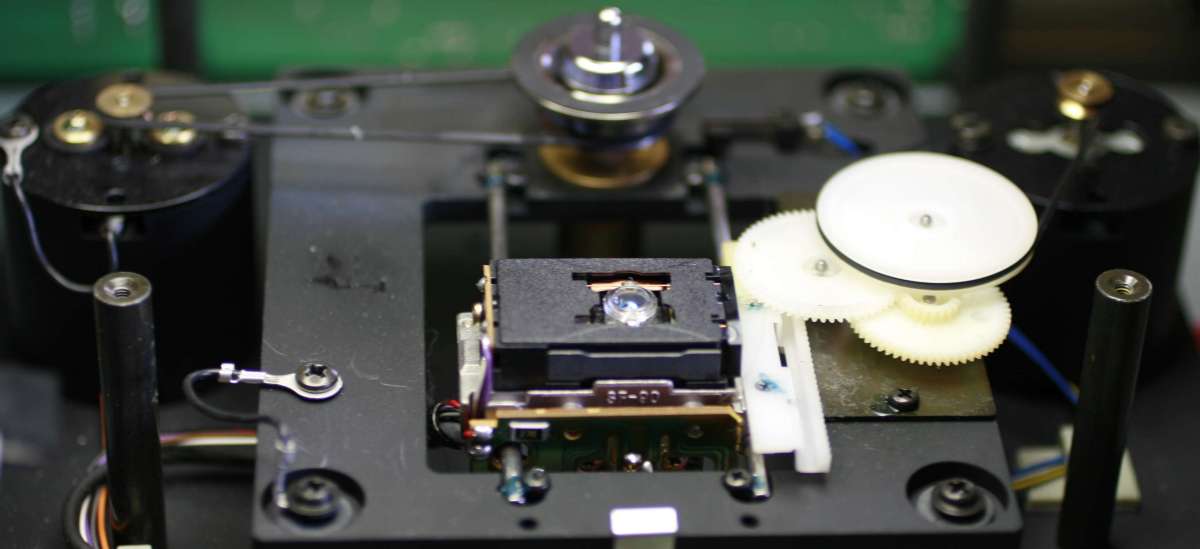
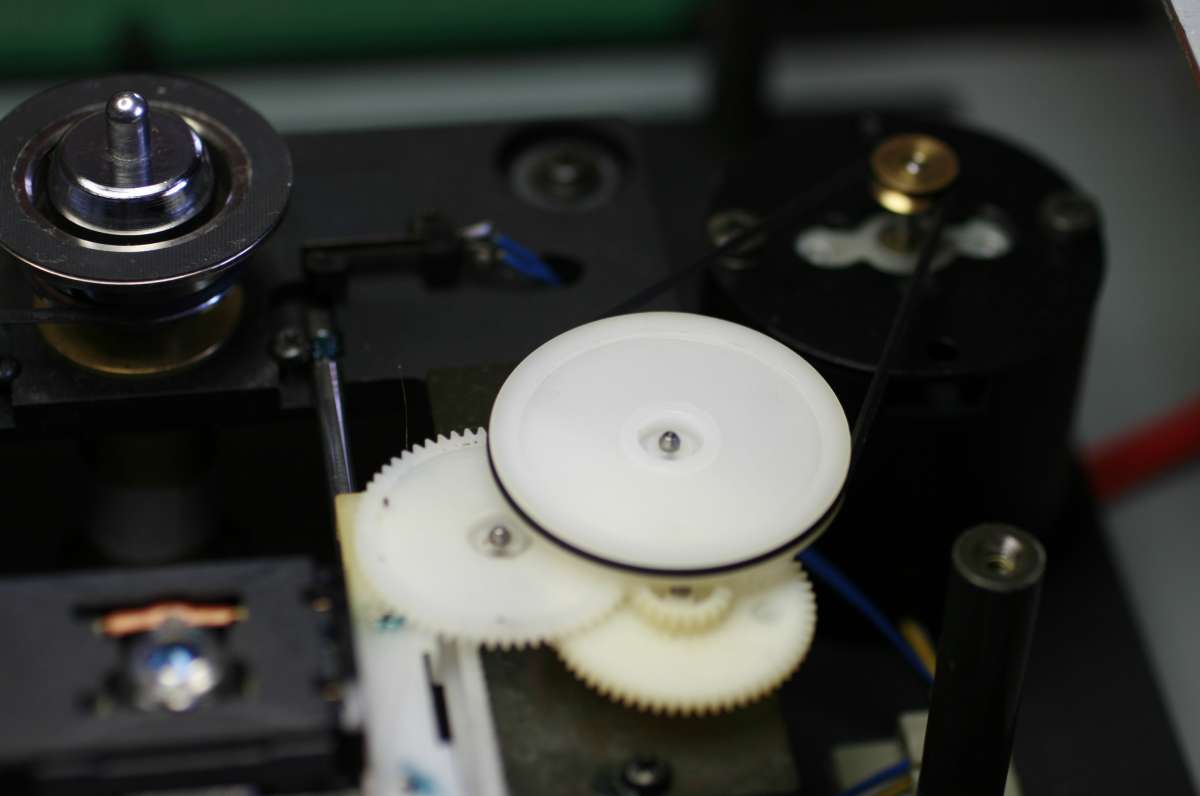
The laser does
not have the magnetic rails a'la Sony, but the plastic linear snail
gears moved
by the rubber belt again. Point for CEC.
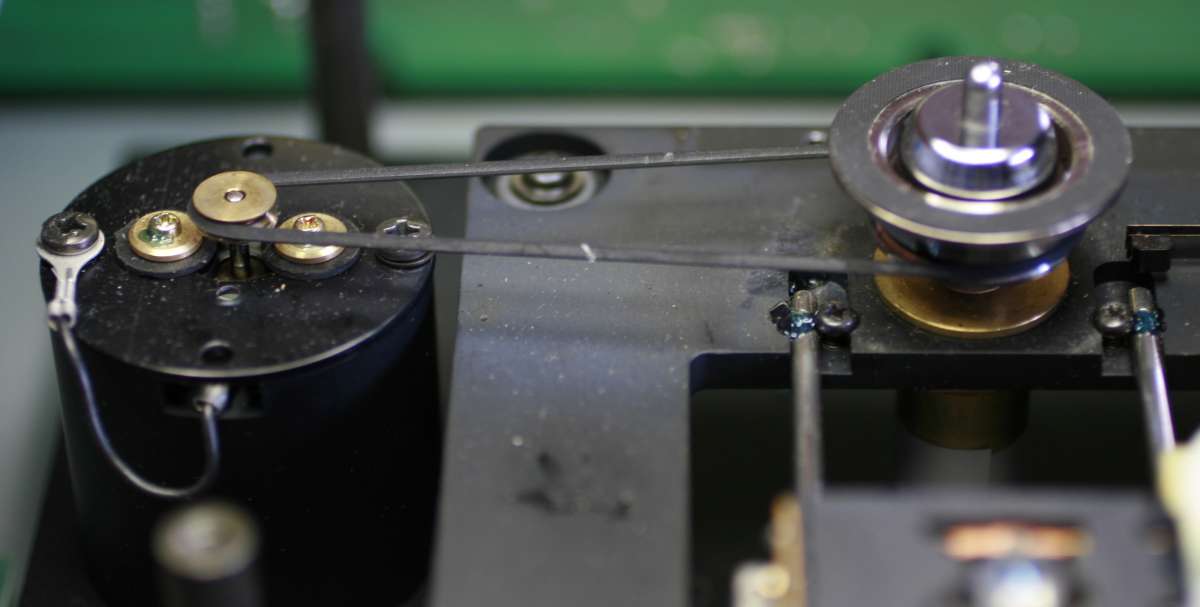
The exposed
legend - rubber belt transport. And oh - what a super duper motor that
is !
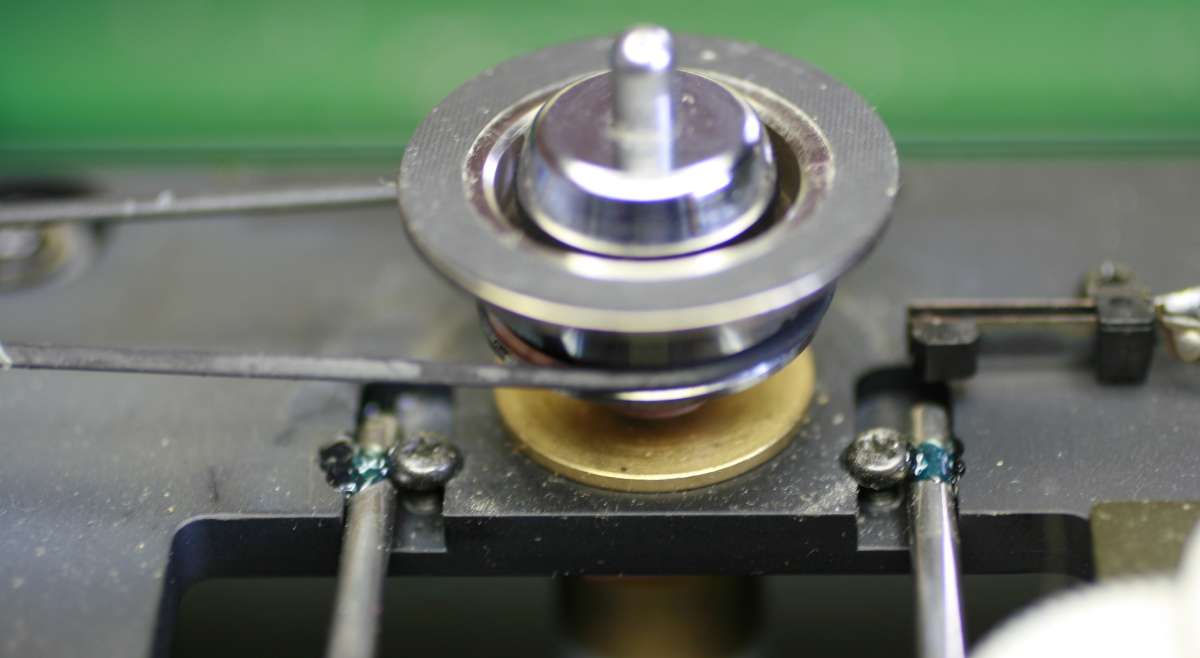
The spindle is
extremely solid and strong, with gigantic bearing underneath to
support the one pound puck.

WAIT A SECOND
!!!!!! What is this ???? After removing two screws - a small
chinese mabuchi motor for 2 dollars comes out!
Hey CEC, are you
cheating like almost everybody else ? Couldn't they source a brushless
motor? Booooooooo.
From now on -
things ONLY GET WORSE. Prepare yourself for a shock.
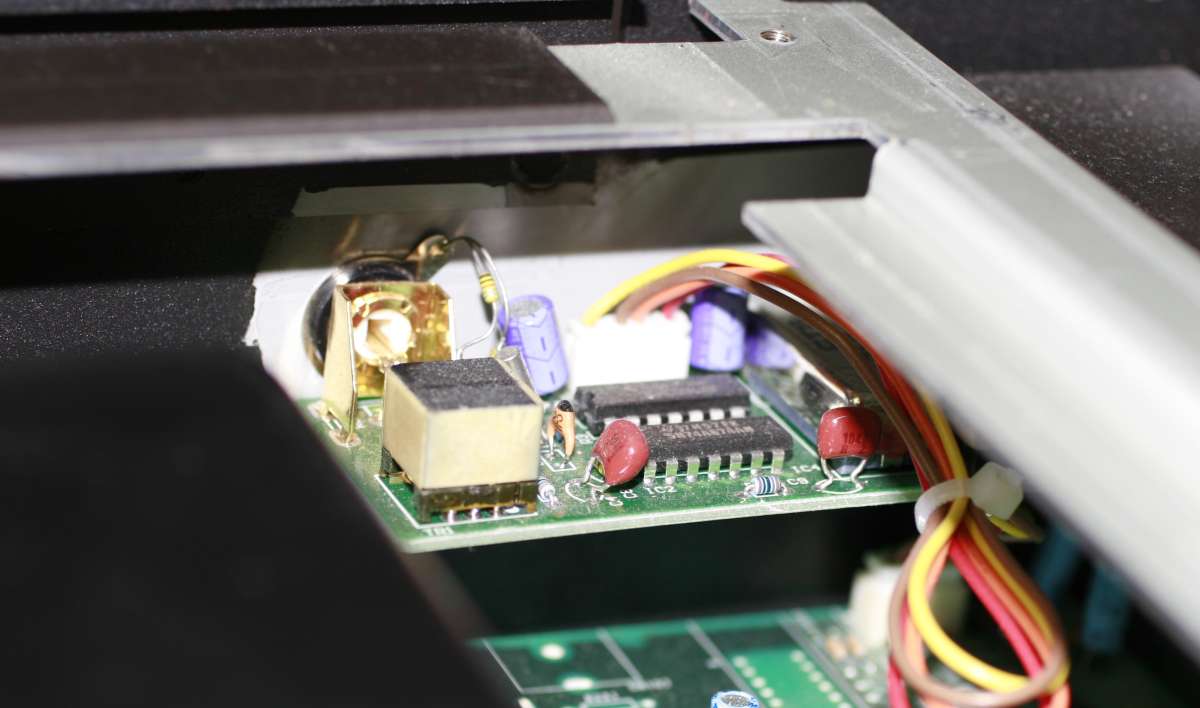
The above
mentioned output shaping SPDIF board which is attached to rear panel
has the usual set of parts - isolation transformer, series caps,
logical repeater pulse chips and resistors. I mean, this PCB does not
PRODUCE spdif signal, it tries to improve it.
In my experience
these circuits do not improve anything - the best SPDIF is the ORIGINAL
one, where it is being generated. Any additional circuitry can only
spoil it. Read about
that HERE . But lets check this one......
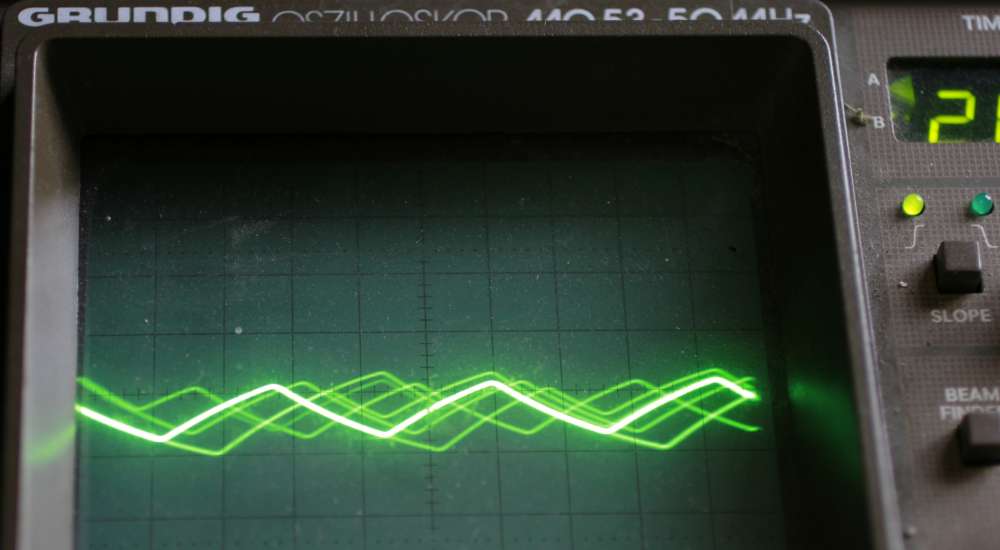
Yes folks - this
miserable trace is the chinch S/PDIF signal - but WHY IS IT NOT SQUARE
?!?!?!?!?!?!
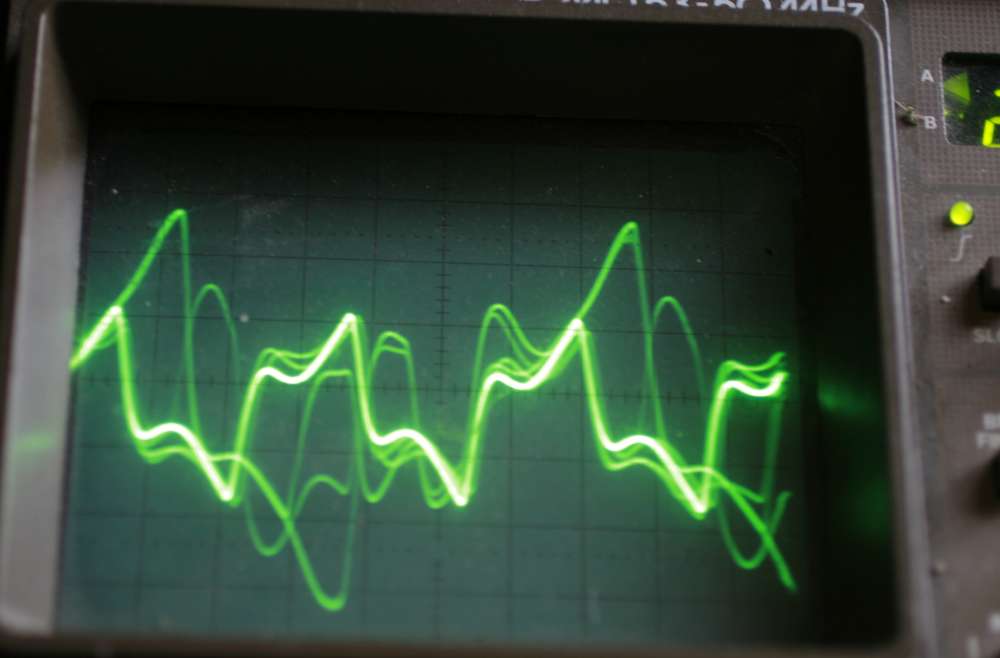
Above is the
AES/EBU balanced trace. Completely different from S/PDIF but again -
far from square.
I CANT TAKE
THIS. Why?!?!?!? Why me?!
Anyhow - my trip
to New York was worth the fun of improving the CEC.
You probably
heard the general opinion : CEC sounds very analog, very smooth, but
people complain about the bass. It is wooly, ill-defined, without
power, weight and authority.
That's the only
reason why these toys show up on ebay at all. The bass issue.
Here is the
bitter truth: CEC sounds smooth and analog like NOT because of the belt
thing, but because CEC engineers modified the SPDIF trace to be
unrecognizable as square. They filtered it and reshaped it to be
without the low square harmonic fundamental. So DACS read it but lack
bass. This is the fake analog smoothness which was created to fool
people into the belt bullshit story. And NOBODY EVER discovered
this. Am I the first one to use a scope? Stereophile did not bother,
mr. Guru Harley drooled over the belt legend in the same way he drooled
over the THETA bullshit.
After a day of
experiments I was able to arrive to the point when the trace looks like
this:
TADADADADADADA
drums rolling - here comes the Lampizator version of the CEC TL-1x......
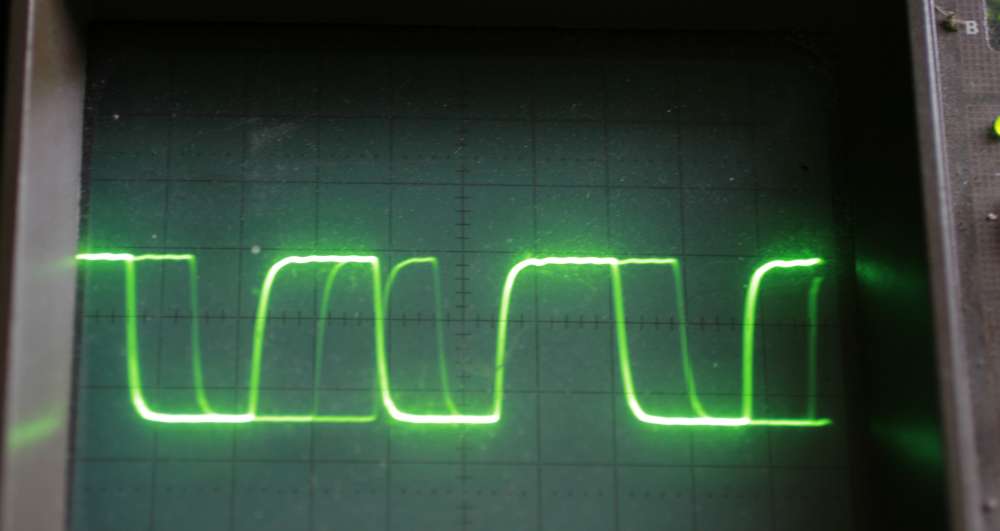
Looks better,
doesn't it ?
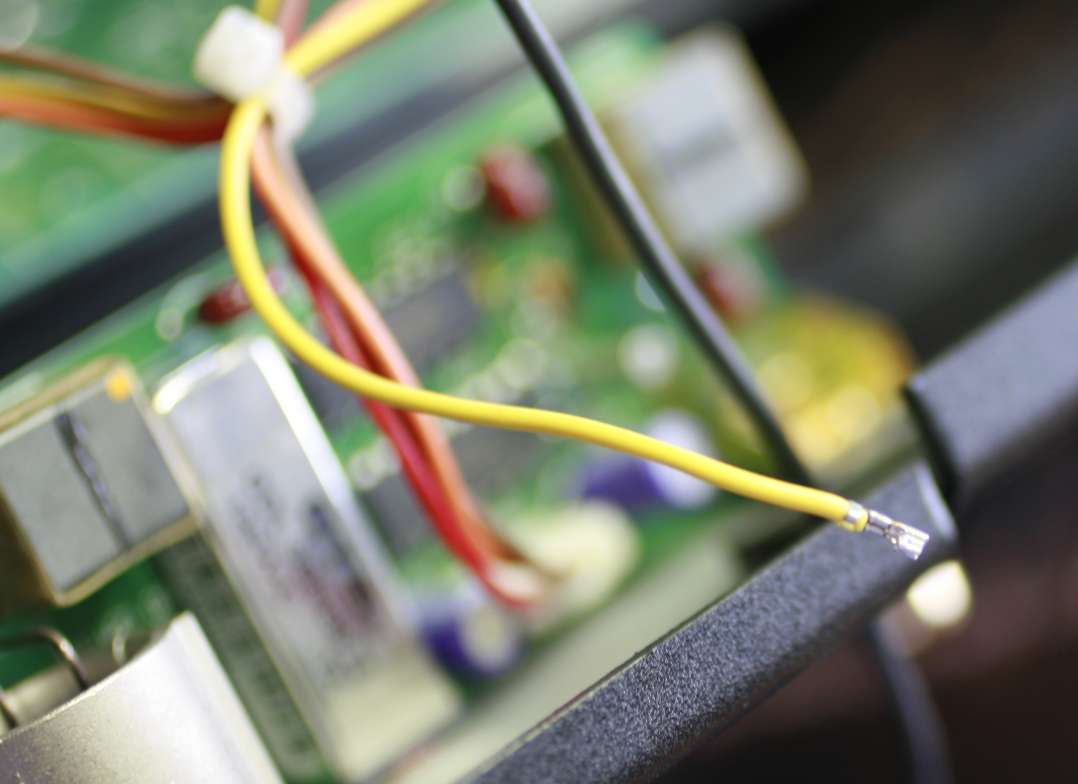
Here is the
trick - remove the yellow wire from the socket and wire it to output
RCA chinch socket (hot pin) .
Use from yellow
wire a 250 Ohms to RCA in series, and 75 Ohms across RCA hot and cold.
Keep the remaining wires in the socket. This way the real S/PDIF signal
comes BYPASSING the whole shitty fake signal generator. What a RELIEF
this is !!!
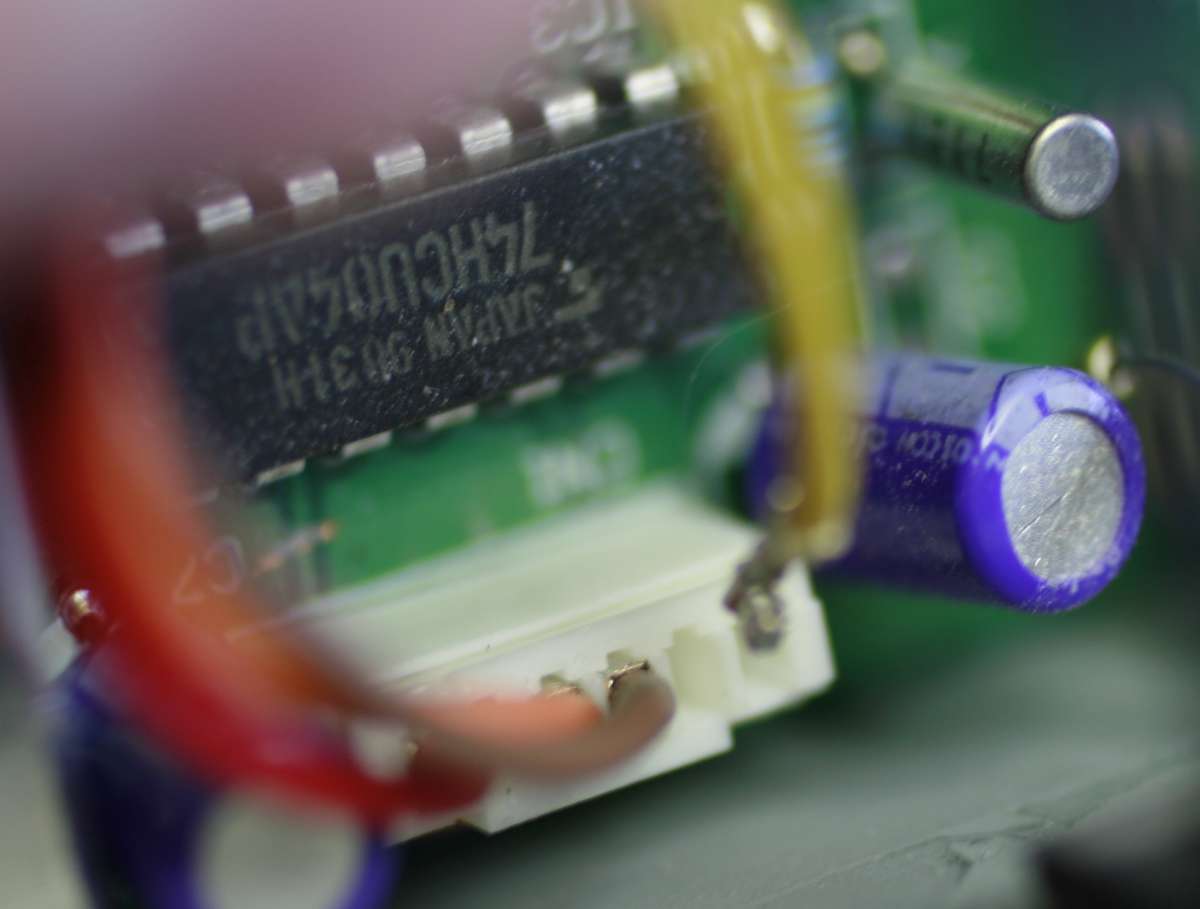
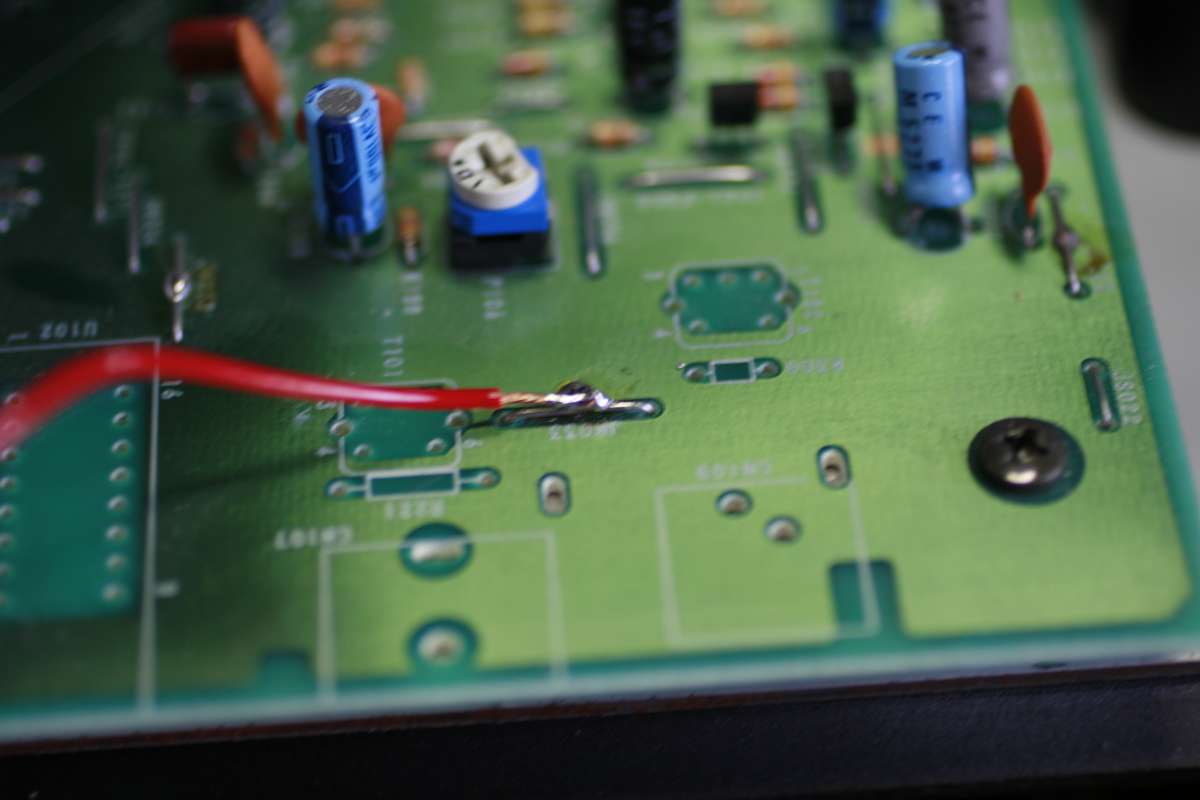
Above is the GND
point which I wired to the RCA ground.
No more crap -
this is a bare naked spdif at its best.
Back to
Listening to the modified CEC TL-1X
The CEC was
compared to Theta Universal transport (my bass reference) and to Sony
CDP-xa5es - my overall transport reference.
The CEC trashes
the Theta in the bass, and in all other departments as well. No contest.
The same for
Sony. Cec wins with one hand tied behind the back. It is that good. All
bass problems disappeared, while there is still beautiful musical mid,
space, depth, stereo, goose bumps, magic - you name it.
My hotrodded
Behringer with Lampizator sings beautifully now. I am so happy that
despite discovering a crappy motor and unbelievably terrible stock
trace of spdif - I can call CEC the winner and the keeper. I am not
parting with it no matter what.
I feel sorry for
Mr. Tim who lost such gem for so little money. And for all those folks
who bought it for 5000 dollars and live with this bad sound it produces
as stock.
Dear CEC - since
you spent 95 % of the budget on golden chassis, even screws have golden
threads - you could have bought a better motor and omit the output PCB
as I did.
But would there
be anything interesting for me to write ?????
And for you to
read ?
Doctor
jet legged Lampizator in the state of bliss.
A month later:
After a month I went further and I upgraded all capacitors with Oscons,
and the three largest raw power supply caps with Nichicon 3 x the size.
I bypassed them with tantalum bypass (on power PCB) and I also built a
separate power for the clock: The output shaping PCB attached to the
back wall of the player has the separate clock already built. It was
only lacking separate power supply. (the quarts is very unusually
shaped as a small and very thin cyllinder) The clock signal is then fed
BACK to the mother PCB by the red wire. So I cut the orange wire
with 5V supply from common PCB supply and I have added the new 5V
regulated supply, using 12V from the power board as a source. So my
clock has now individual supply and all is great.
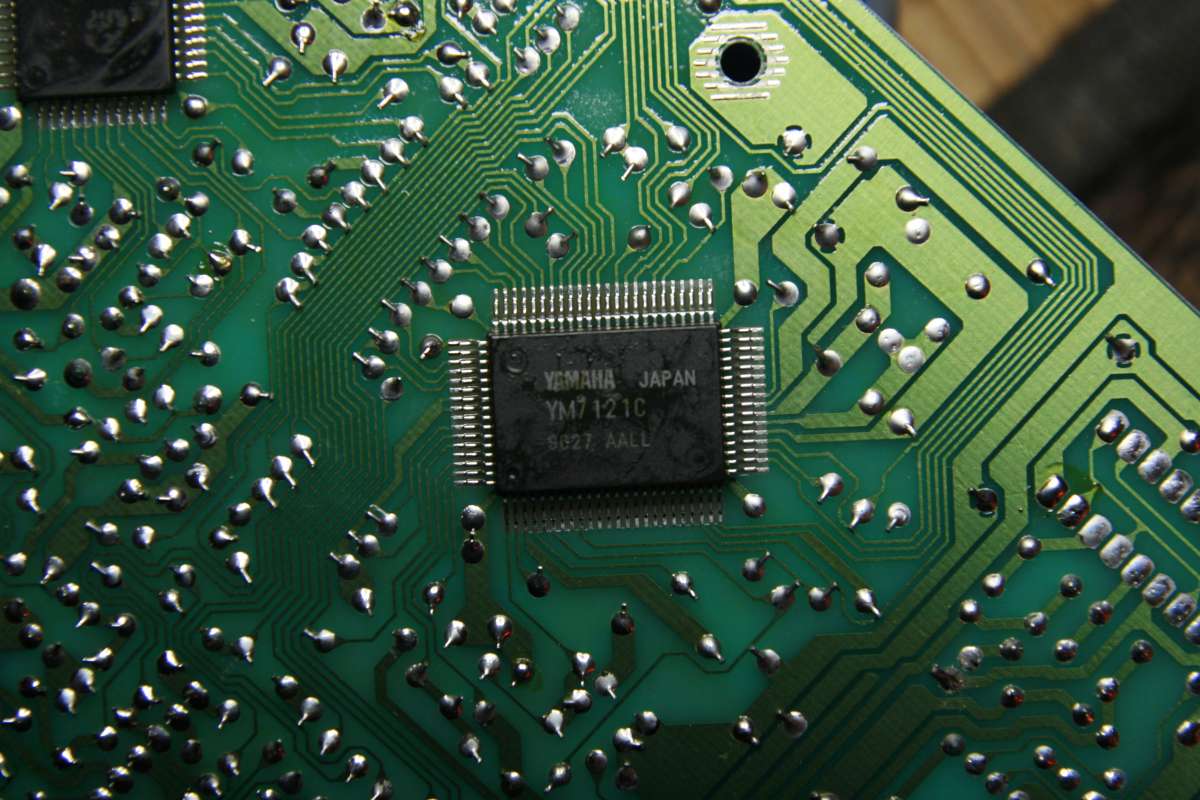
The digital chip which controlls the player and produces SPDIF is the
Yamaha YM7121C
It should also get the dedicated supply
line which I will add later. The supply pins for yamaha are: for VDD :
3, 32, 72, and for VSS: 77, 29, 52 .
Digital out is on pin 49 th (5 V PP)
The datasheet is here:
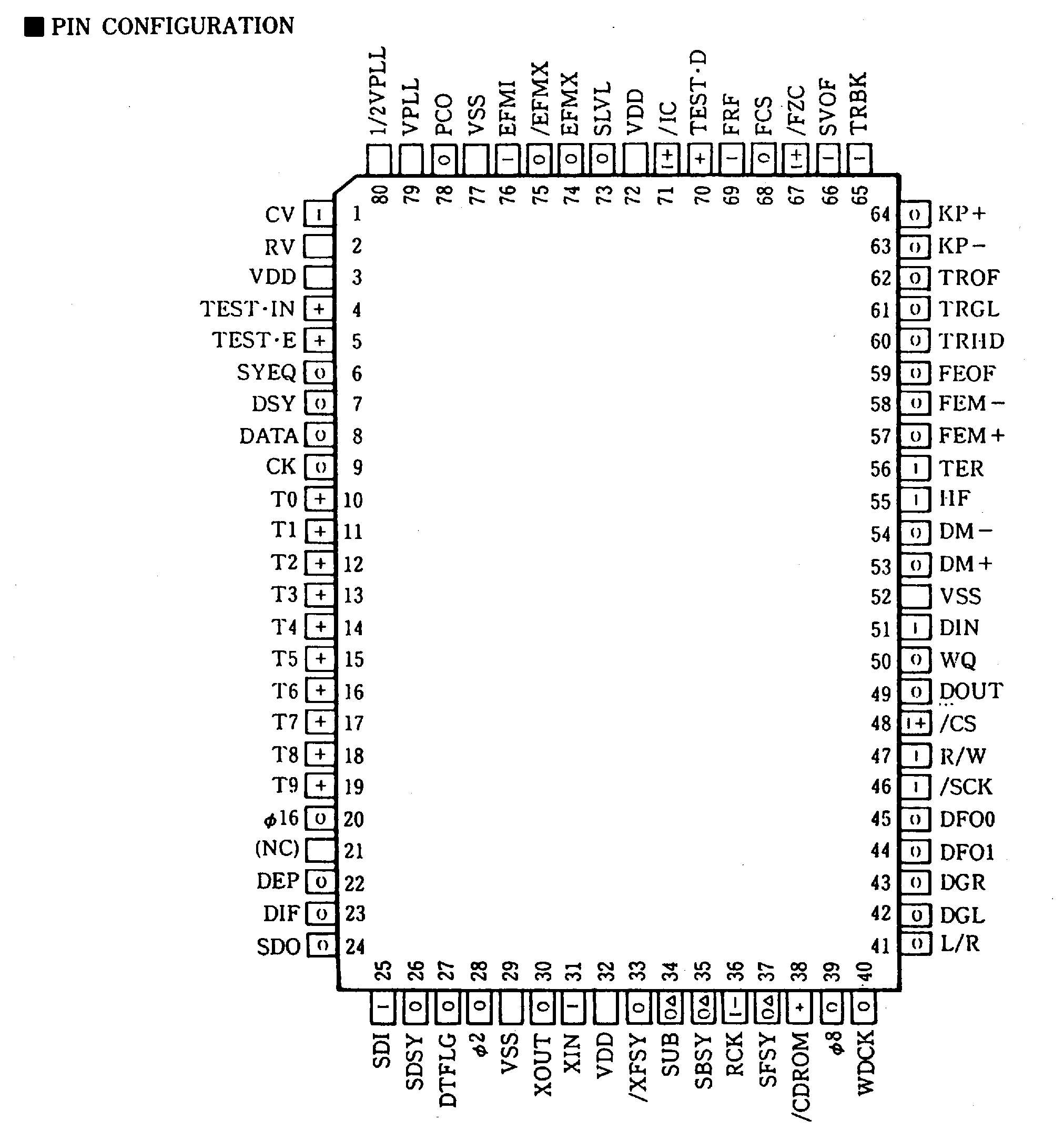
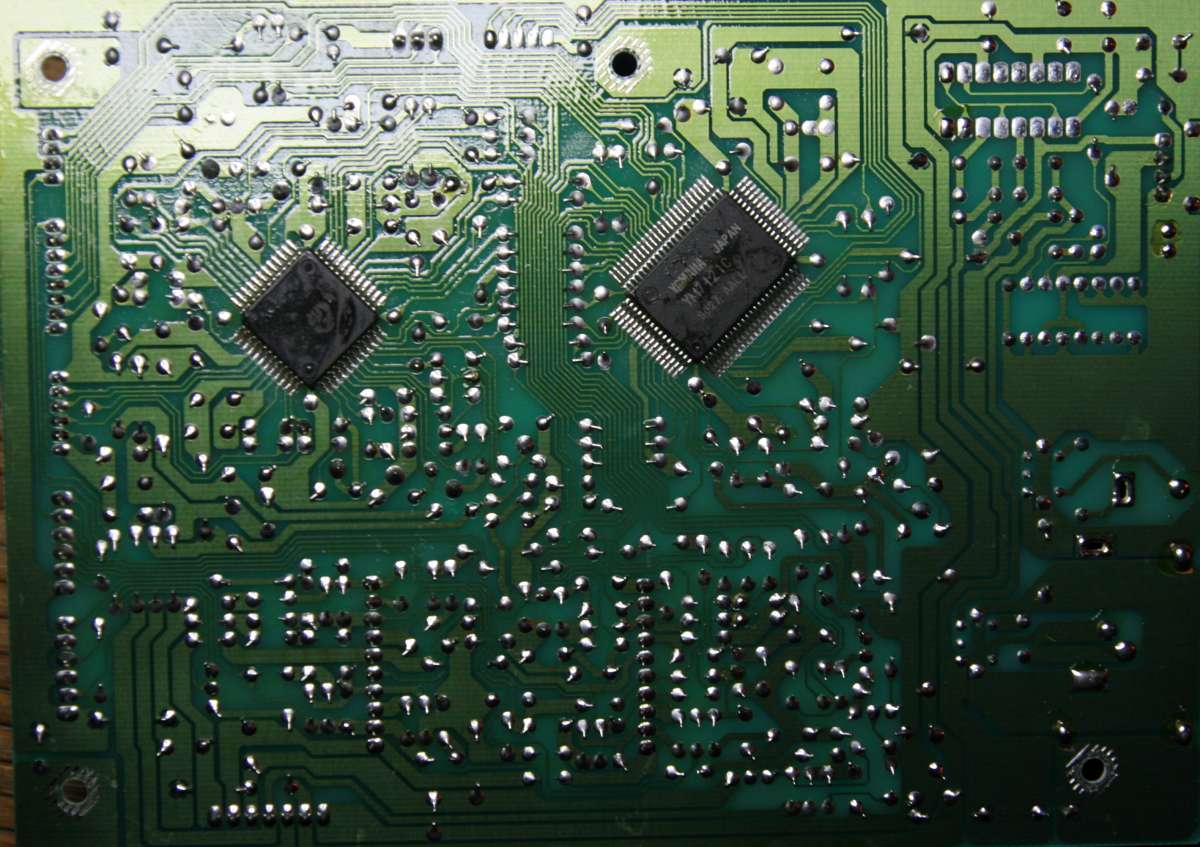
The other chip which is black because it was painted black - I
checked -is a Sanyo demodulator. Somehow I am not surprized because
laser is sanyo as well.
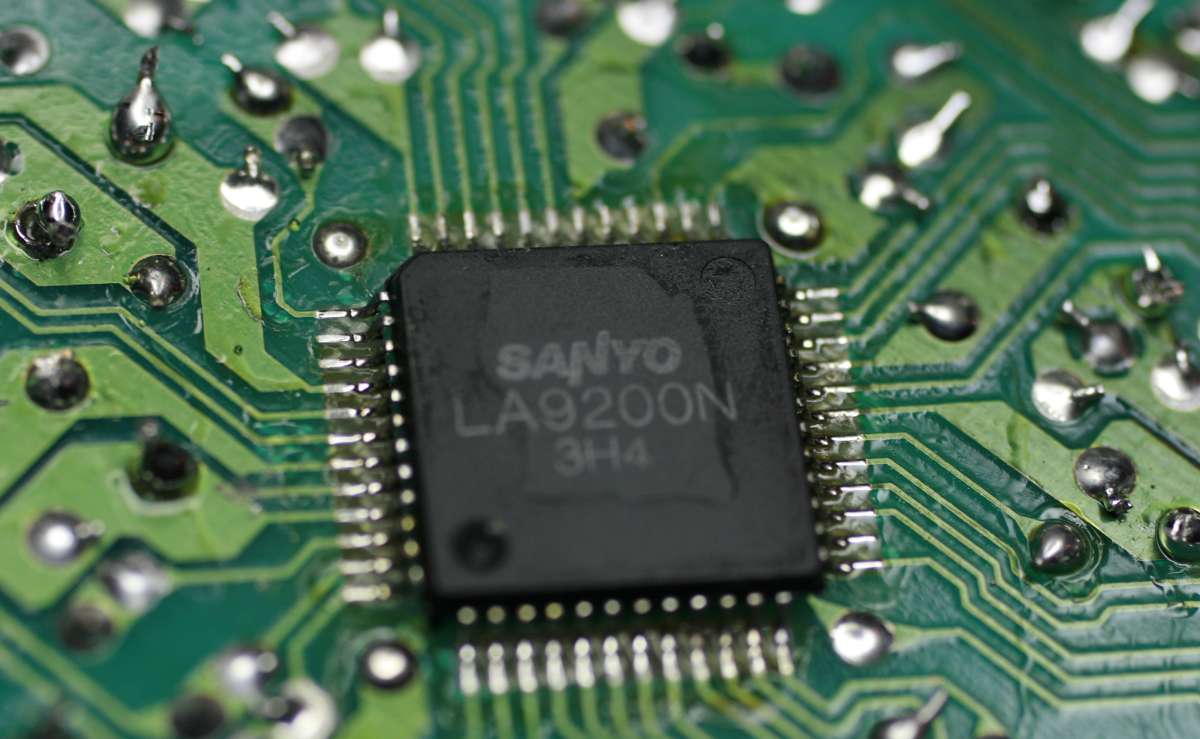
See it revealed !
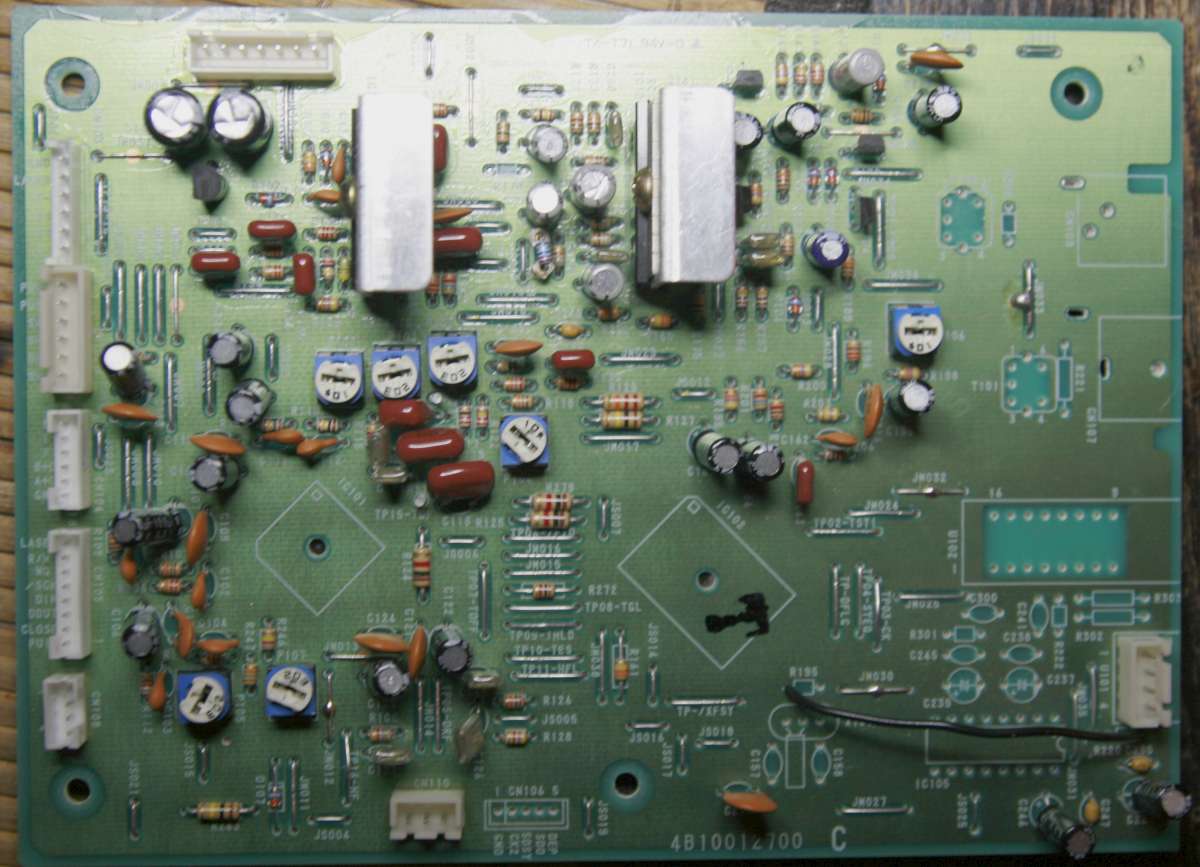
The whole main PCB in stock form. No regulators, no ferrites, no
premium caps, NOTHING of highend pretensions. It is just a pcb.
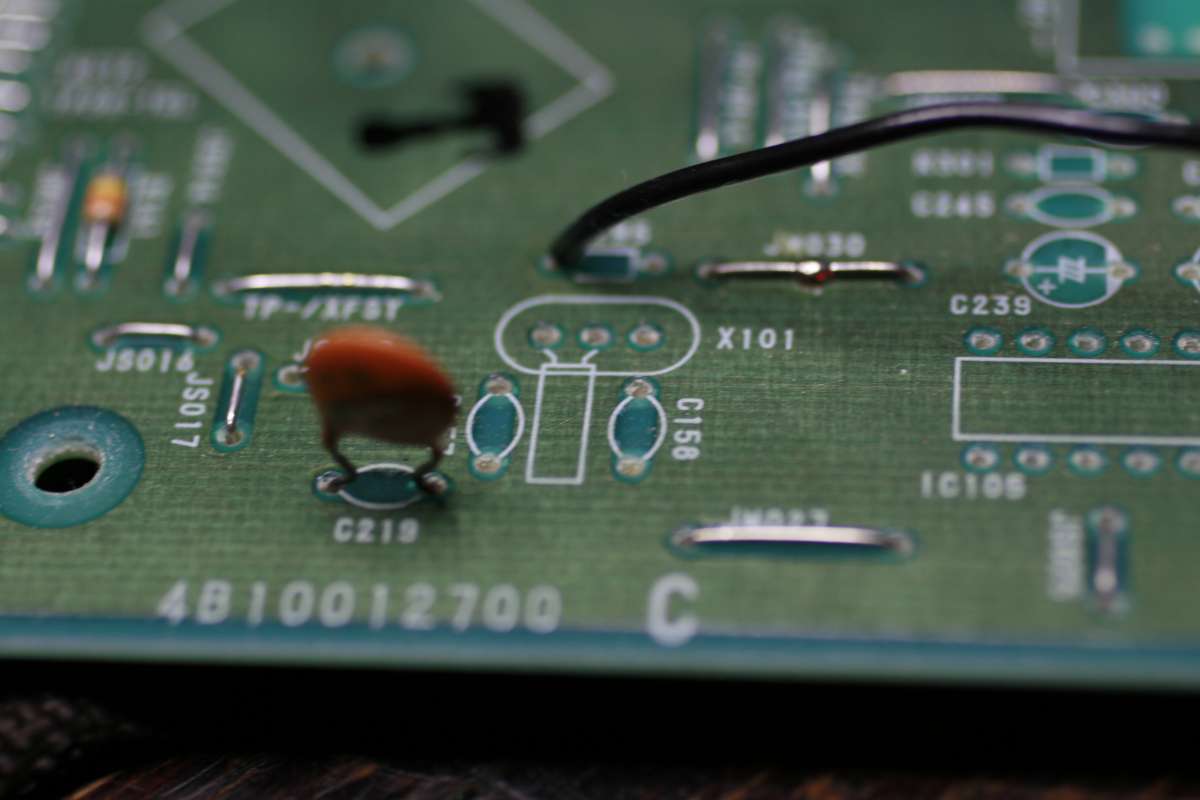
X101 used to be the clock which was moved to the small PCB on back
wall. It can be moved back here because we don't need it so far away.
I did not do it yet. The black wire brings the clock signal back from
the remore clock.
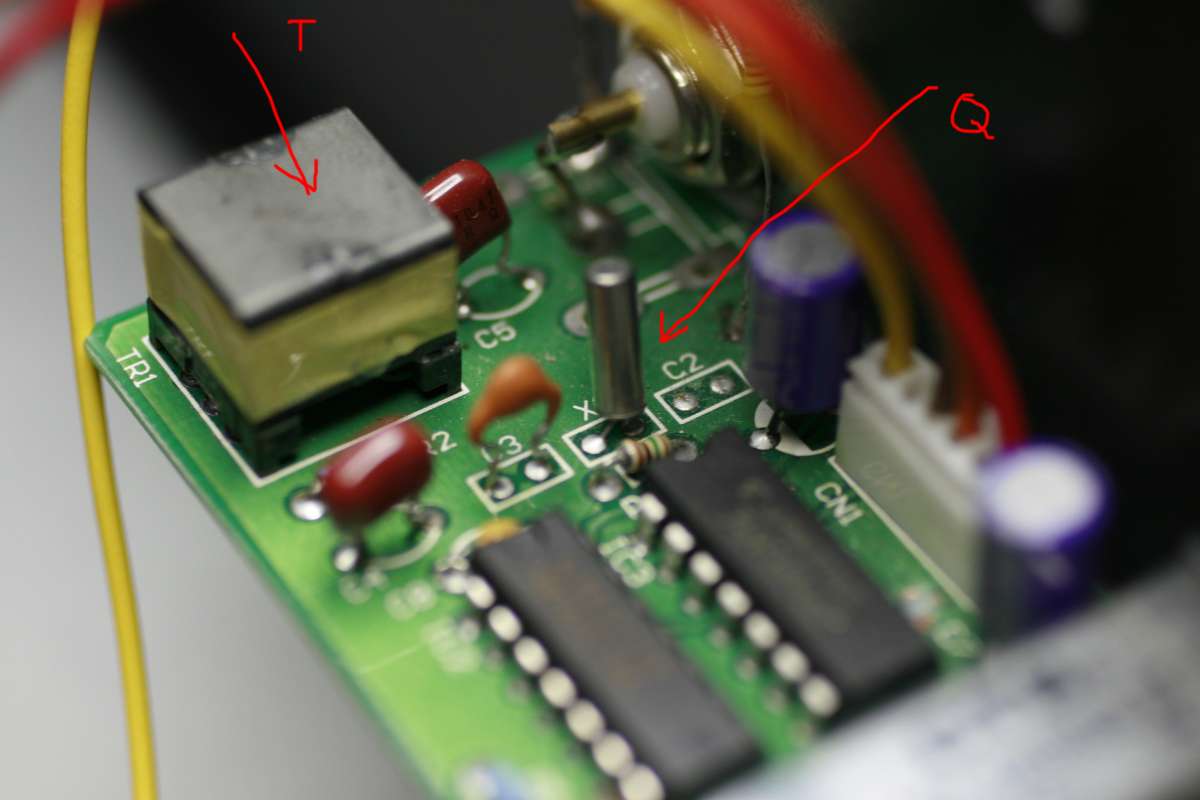
Above is the remotely mounted clock. Q is for quartz, T is for
signal isolation transformer (evil
!!!)
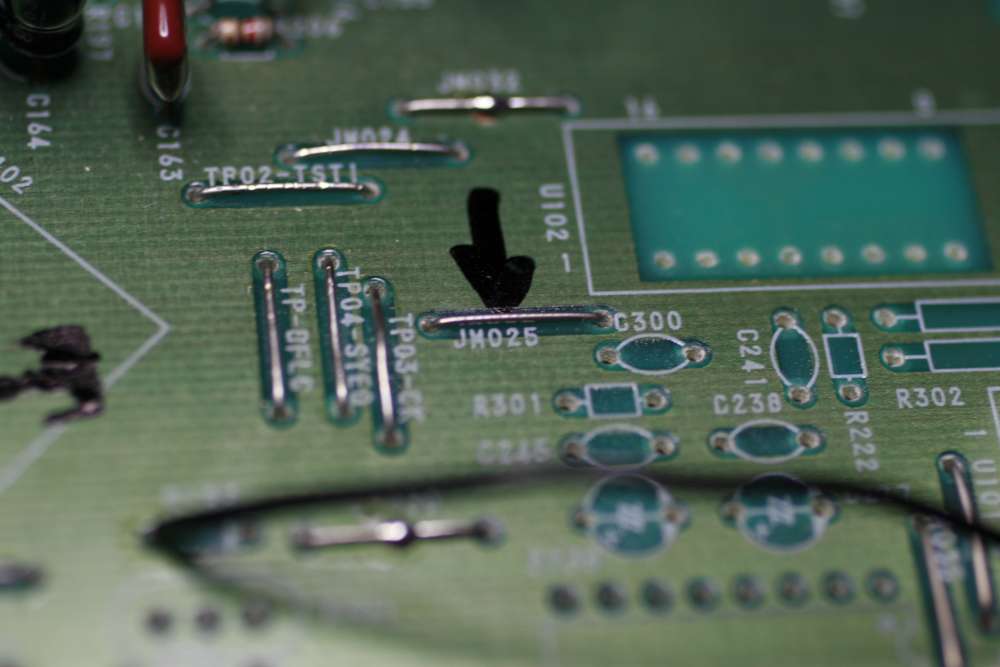
The arrow shows where the spdif signal is closest to the source Yamaha
chip. Take it from here , lift the right end of the jumper and solder
the wire to the lifted end. Take it to RCA by 250/75 ohm resistor Lpad
- 250 series, 75 parallel.
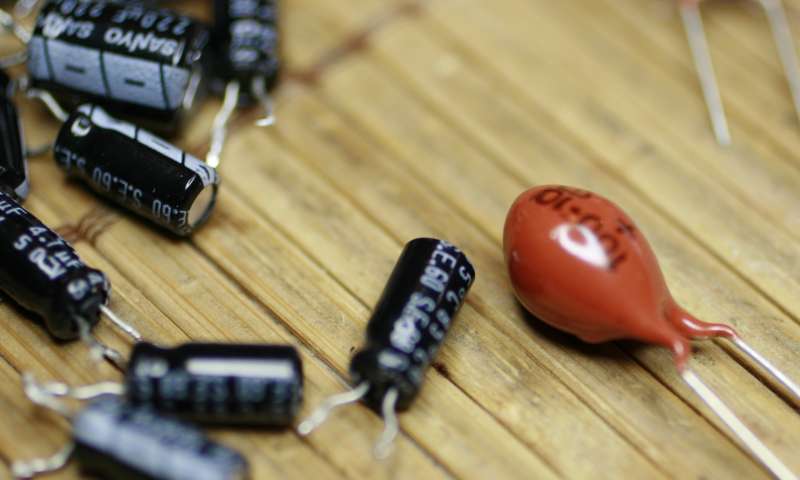
Black caps are removed, orange tanmtalums go in - 100 uF / 10 V.
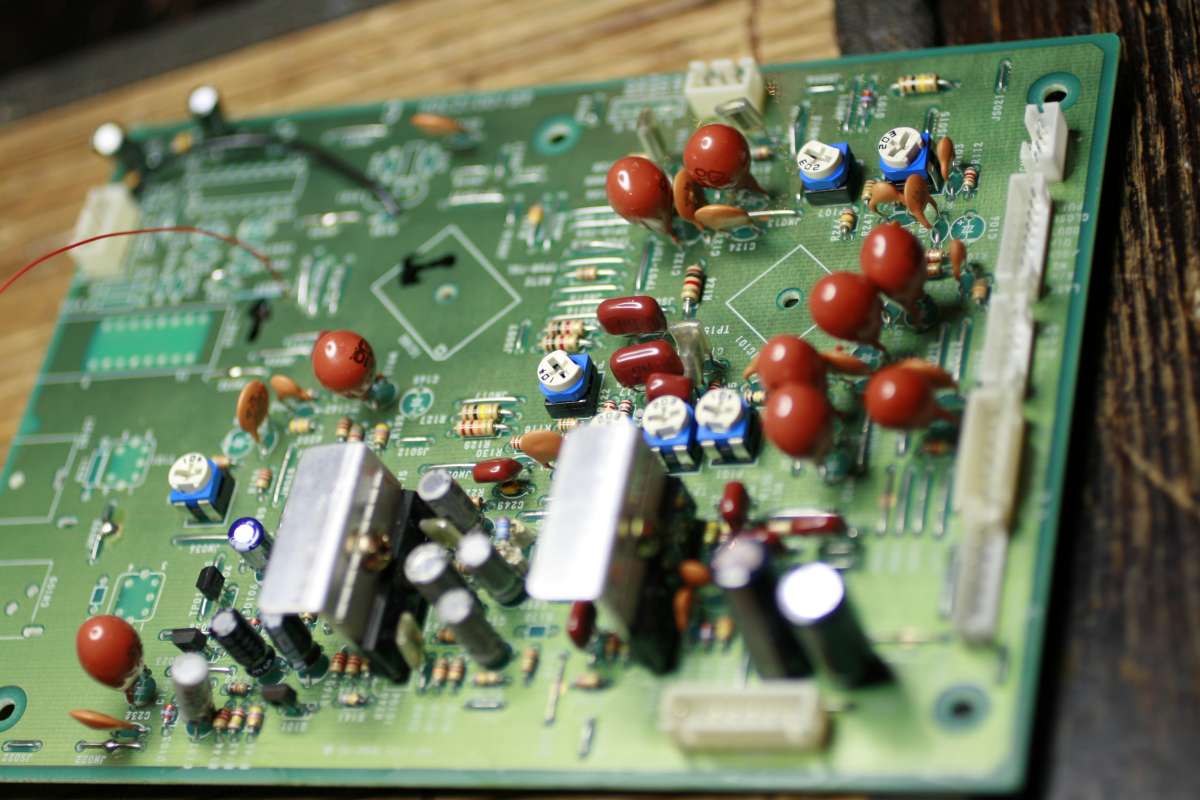
Tantalized pcb.
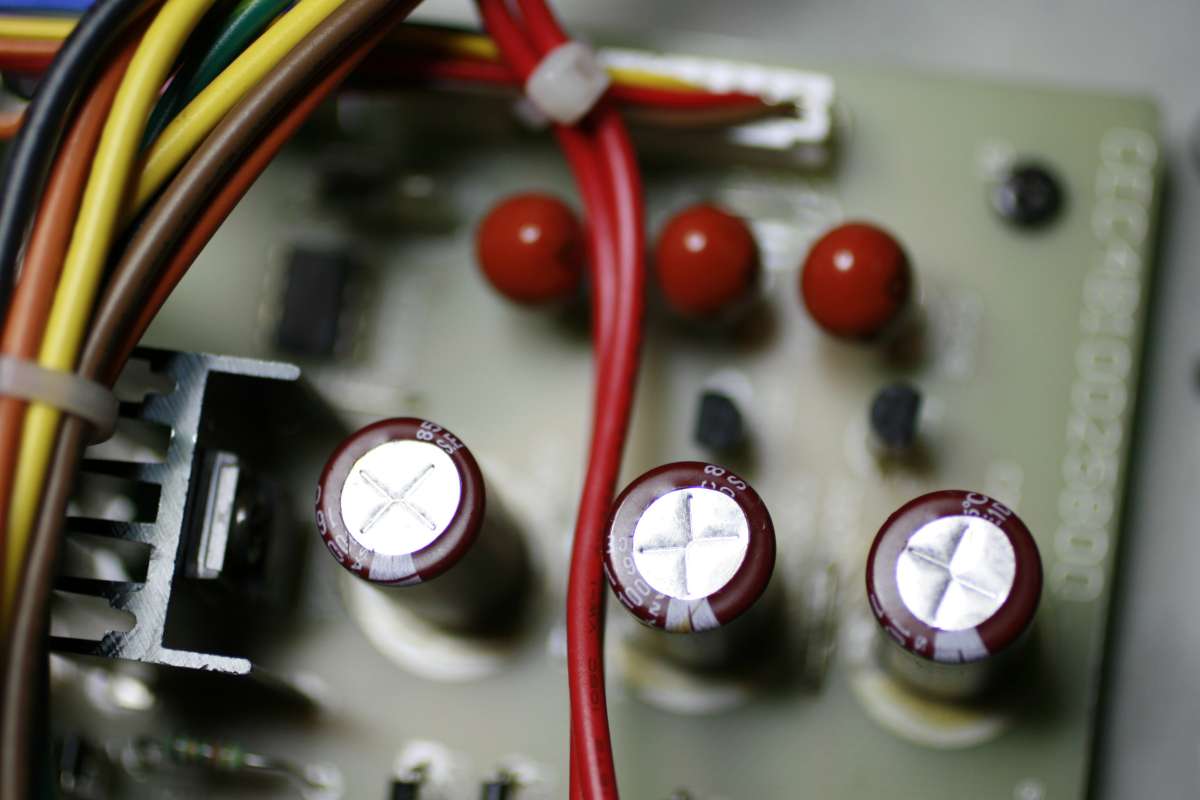
Three tantalums went to the power supply PCB after the regulators.
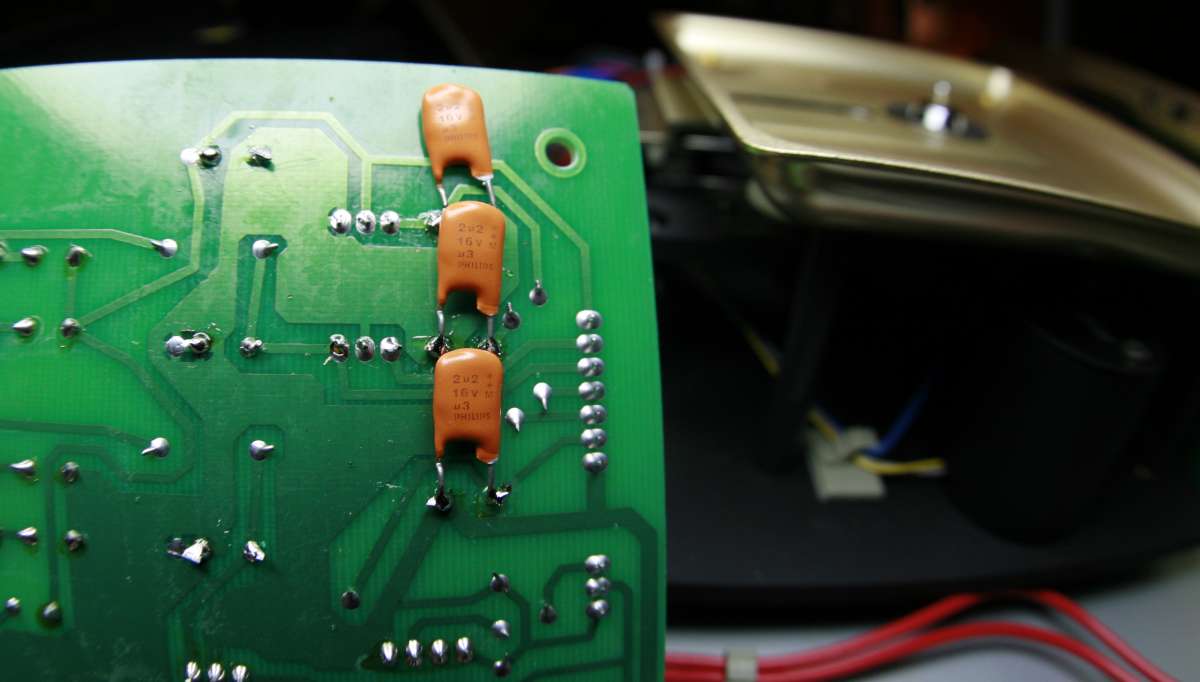
Tantalum bypass is on SECOND CEC pcb where instead of large tantalums I
used Rubycons 3300 uF low ESR caps.
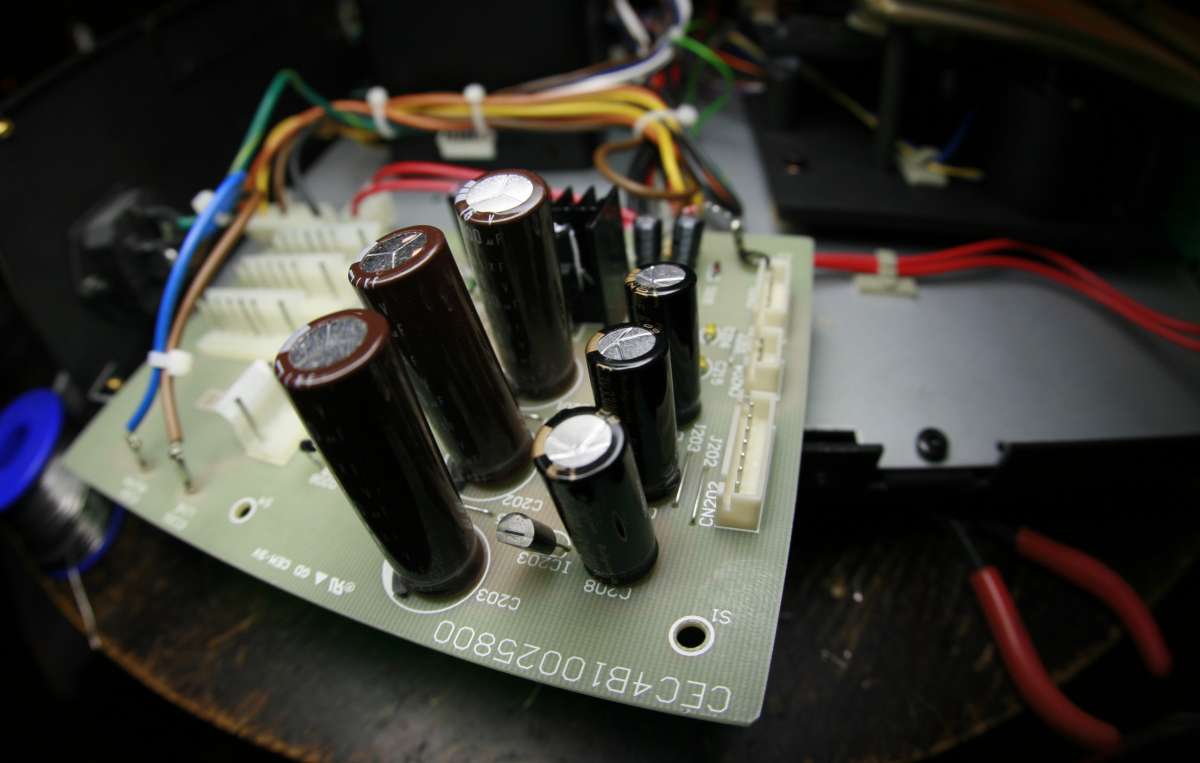
Second power PCB wit black rubycons.
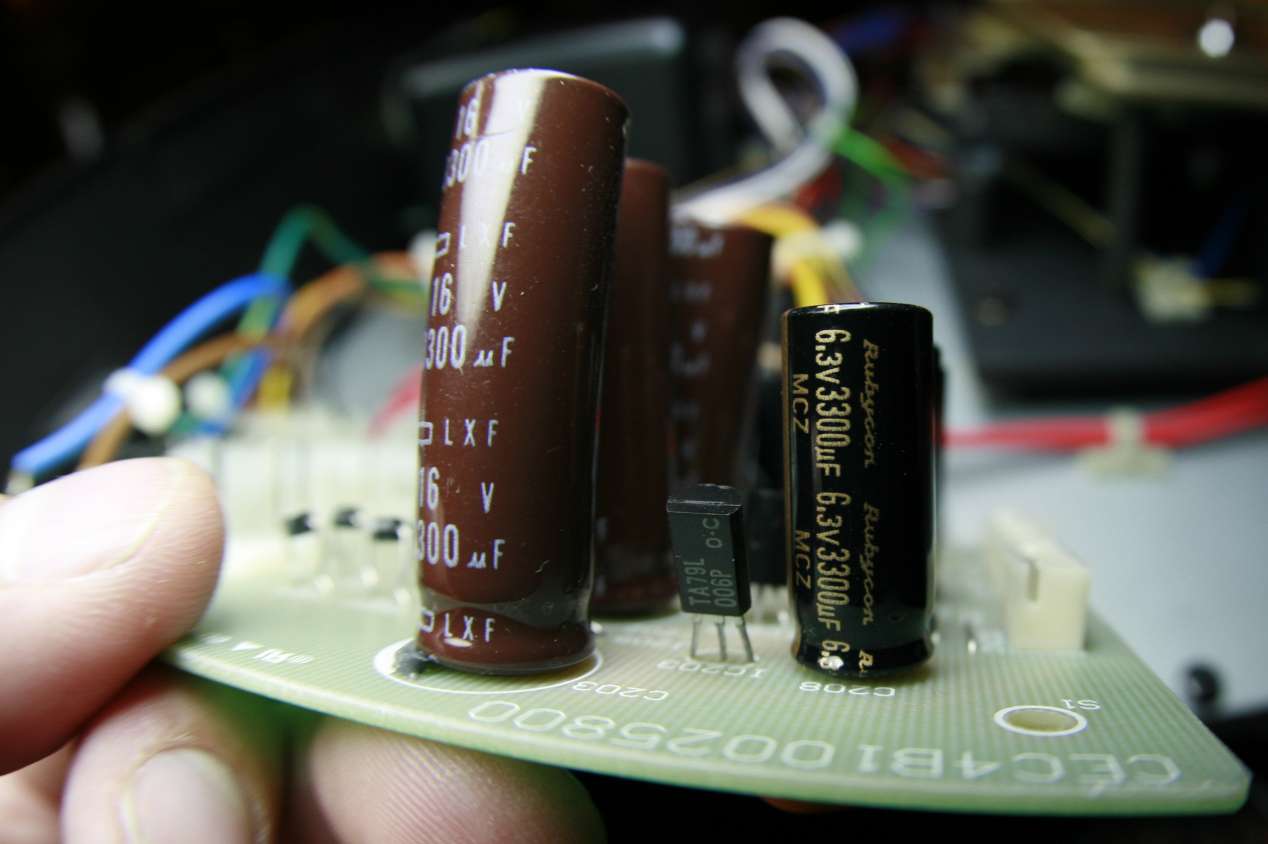
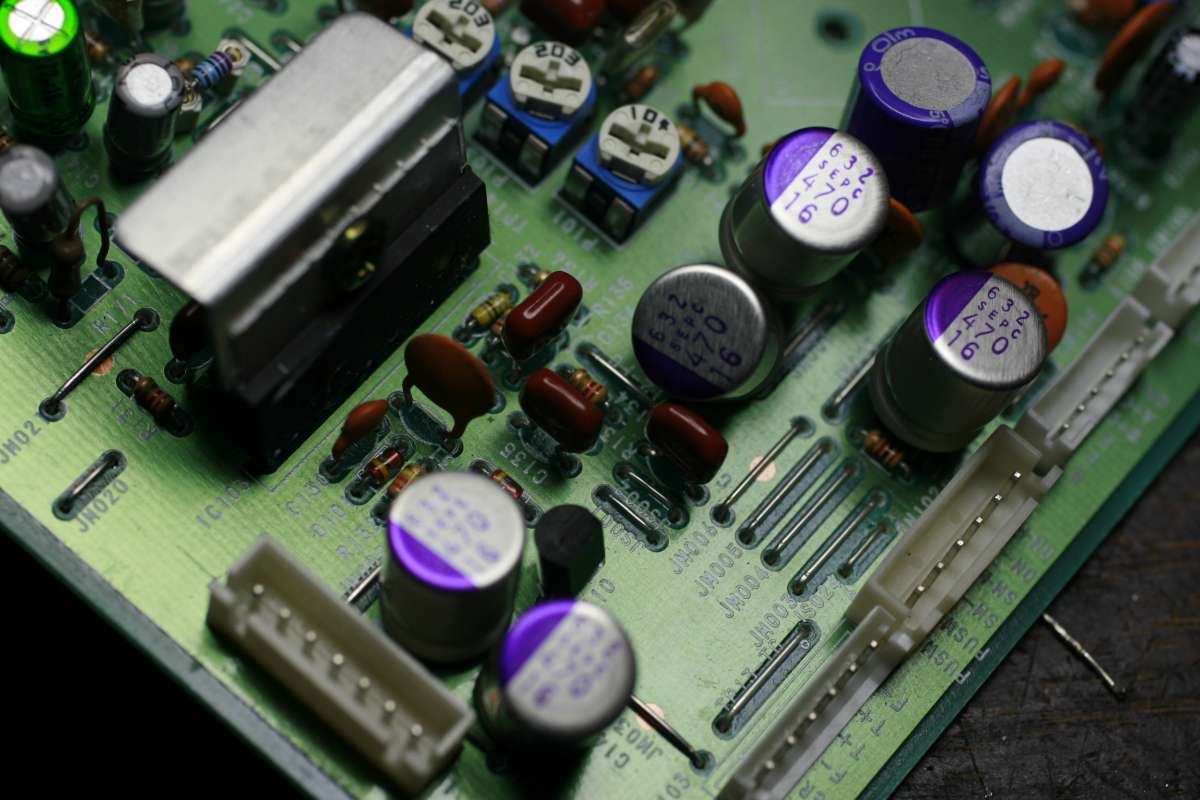
Second CEC with oscons everywhere. I had two versions to compare -
orange Tantalum and oscons.
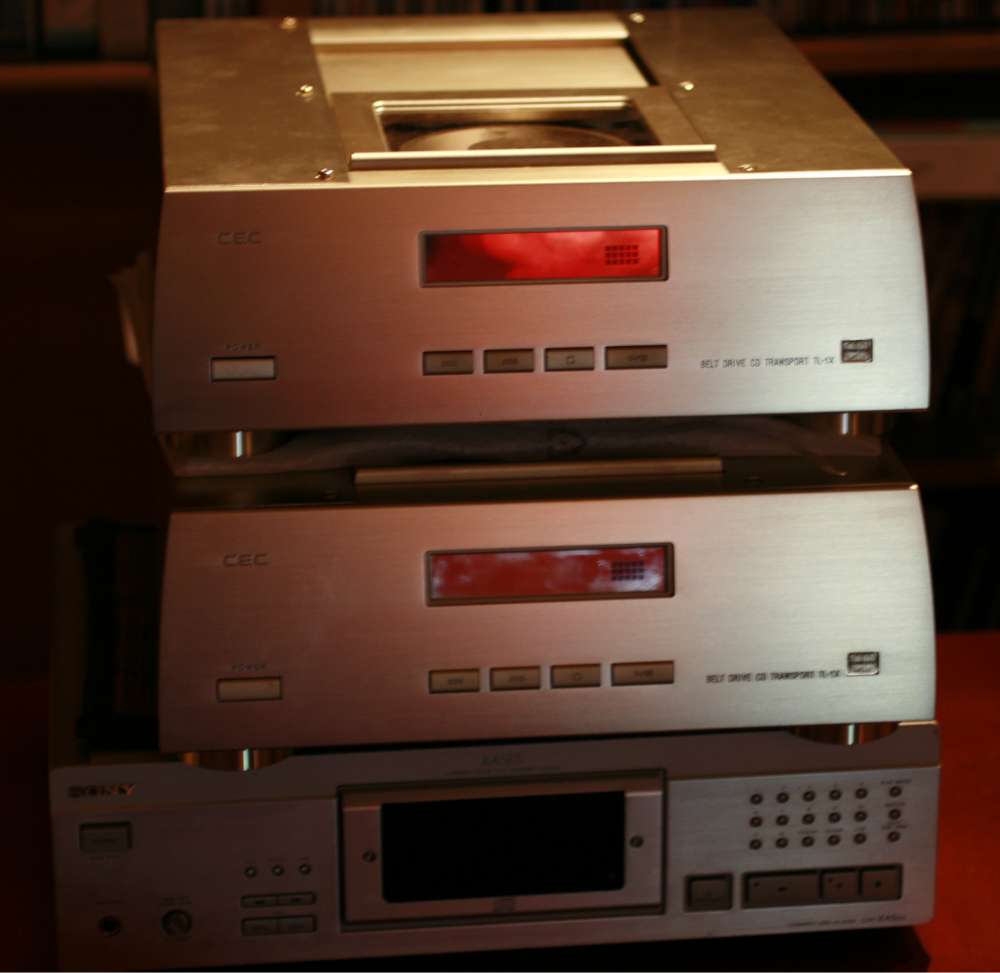
Two CEC machines competing - Tantalum version and oscon version.
At the time of writing - no conclusion emerged yet.
It will come soon.
Sony unfortunately was second best in this contest. CEC is better.
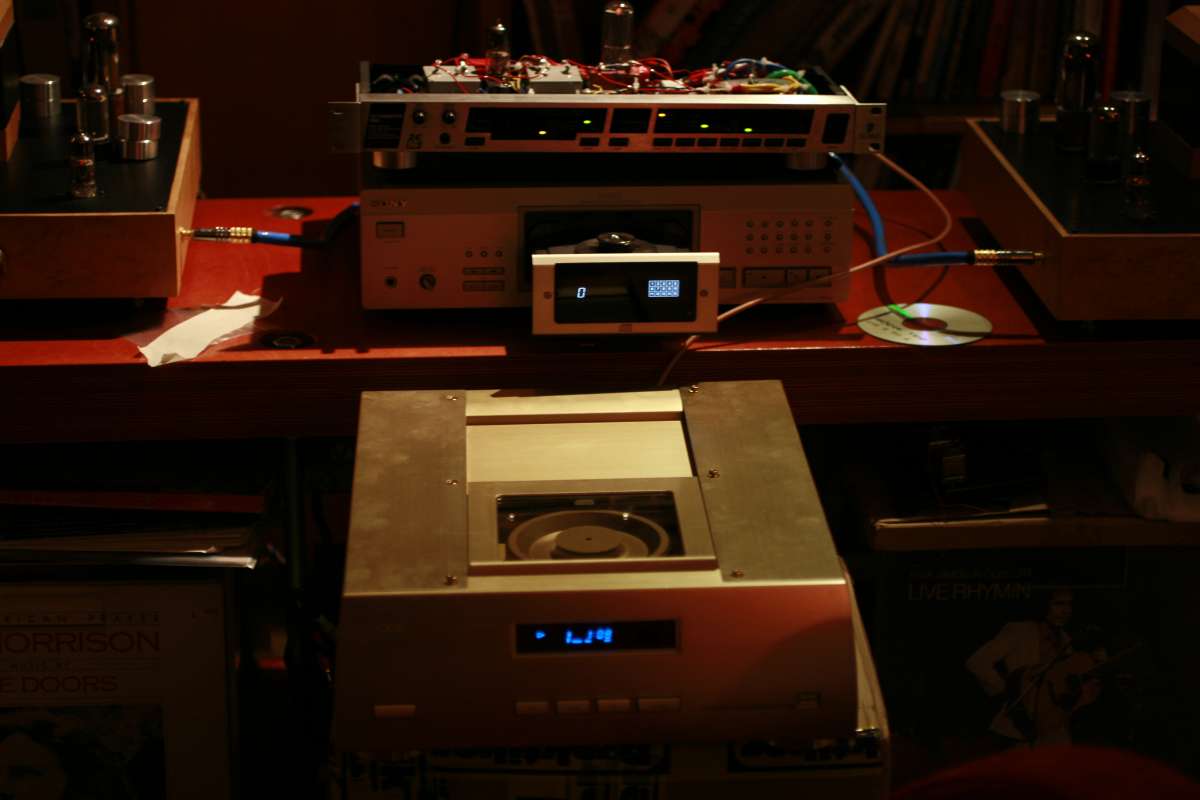
Behringer DAC serving as test processor for my evaluation.
The final word:
the sound of CEC is outstanding. It betters all my transports by
now.
It is more natural and liquid than the best ones I know - the Theta and
the Sony XA5ES and 7ES. It beats to no end the Teac T1 with cheap VRDS
and superclock from Trichord. It is somehow close to Mephisto1 with all
my work done on it and it was not compared to the superb Mephisto2.
The most apparent feature of the sound is the magical presence in the
room, transparency, very very deep and controlled bass, and resolution
allowing to hear the hiss of master tapes.
Overall - a mix of solid construction and bullshit - the CEC is my
favourite transport after even only one mod - bypass of digital out
transformer. This is a one minute mod anyone can do.
Half year later
I have lived with the CEC and I confirm all the good things I already
wrote about it.
I have some second thoughts observations and even one theory:
1. The motor issue: I think I know why CEC sounds so different from
other players - what makes it SO GOOD.
Since it has the heaviest puck in CD kingdom, I believe that it
is THE PUCK that makes it sound great. Everyone else writing about THE
BELT story - seems to overlook the pook (a rhyme). Furthermore,
to benefit from the puck's ability to smoothen out the minuscule speed
variations in between motor magnetic stators (unevenly spread around) -
it is beneficial to have WEAK MOTOR.
Yes, the key to CEC success is the most extreme ratio of puck weight to
motor torque. (high ratio). For sure the biggest ratio of all
players in existence.
I suspect that electric motors do not rotate smoothly - depending on
the magnetic construction, the motor speed varies - it "jumps" in a
similar way the seconds hand in the clock does. It is impossible (very
costly) to make a smoothly revolving motor, hence they choose the
easier way - the puck .
So contrary to my stupid, uneducated and rude comments - using a strong
motor would defy the whole point and "clock jump the puck" again.
Vive la moteur inferieur !
In fact - this is where the belt comes to the picture - the belt is a
rubber, it is elastic, and so it amortizes (dampens) the motor
irregularities which can not effectively accelerate or slow down the
heavy puck. The Puck is a FLYWHEEL of the player.
THE ROTATION SPEED IS PERFECT.
Such effect is not achievable with any other technique or technology
however expensive.
An even higher degree of speed smoothing is used by the strangest
turntable - the VOYD REFERENCE. It also has three small motors and 3
belts. Why 3 ? Probably, each one has the point of high / low torque as
it rotates - delayed by 1/3 of phase so together they run semi
smoothly, while the belts of different lengths further smooth things
out. (Needless to say it is a great turntable, Audionote deck of
choice.)
But I digress.
Second observation: you can upgrade the caps from the power supply
board really freely, and also add a AC filter LC. But be careful when
messing with the signal PCB - the caps which work in the laser reading
circuit and servo circuit and motor circuit - CAN NOT BE UPGRADED WITH
DIFFERENT SIZES. generally avoid the space between two big things with
radiators - the integrated servo mechanism. Or just change the cap size
1:1
Only caps that you know are in
chip PSU can be of different sizes (oh it feels good to oversize !!)
.
Third observation: I had at home for a week the CEC TL-1 without X -
the old one.
It differs visually - it has a square display window, not the
horizontal slot like TL-1X. It also has different buttons.
It is the INSIDE however that matters - and believe you me : they are
practically the same.
Unless there is one critical part different which I haven't noticed -
that's the same laser, same mechanism, same PCB. Same capacitors and
parts, same quartz.
Differences are not for me worth the second hand price gap:
NonX has no AES-EBU connector
The quartz and separation transformer are on main PCB where the X had
empty places. There is NO additional output shaping board. The same
circuitry is already un main board.
There is no 120/230 easy switch.
The PSU is 10 % less sophisticated - less regulators etc.
What is important - the puck of the X is half the weight and quarter of
the torque momentum of the X. Which means a quarter of the
flywheel effect.
All in all - if you are ebay hunting - the non X is as good as X
especially after some tuning. I could not tell the audible difference
after treating both similarly by caps and my other works.

















